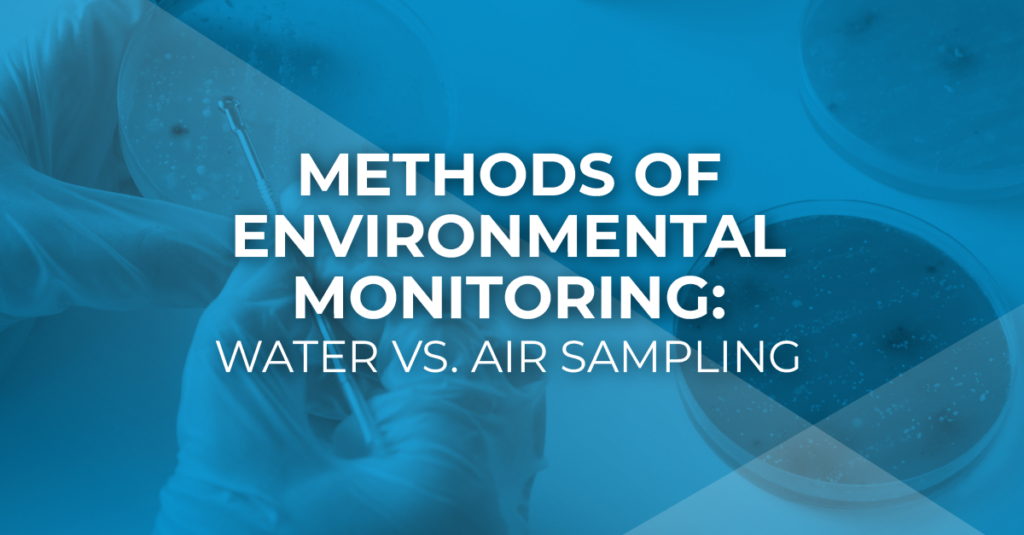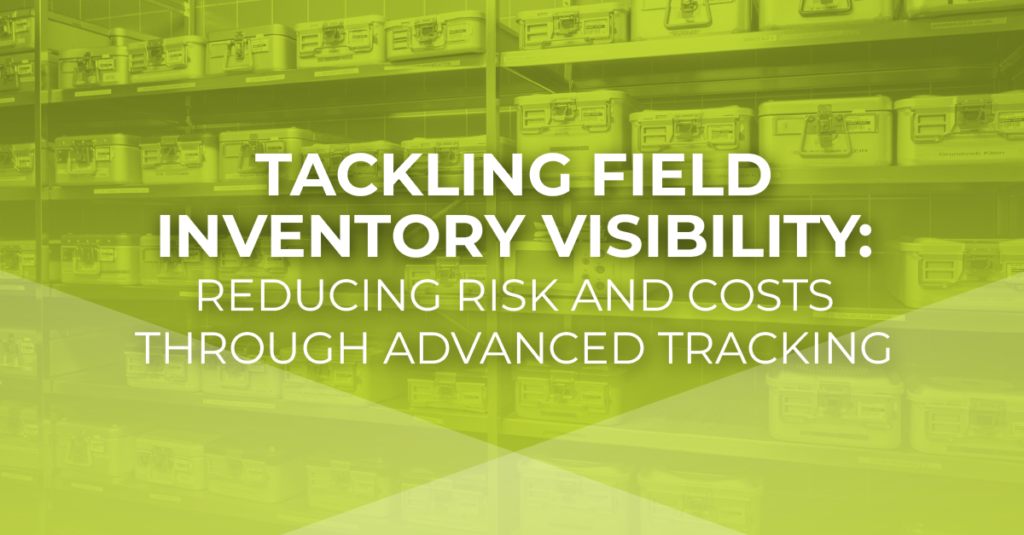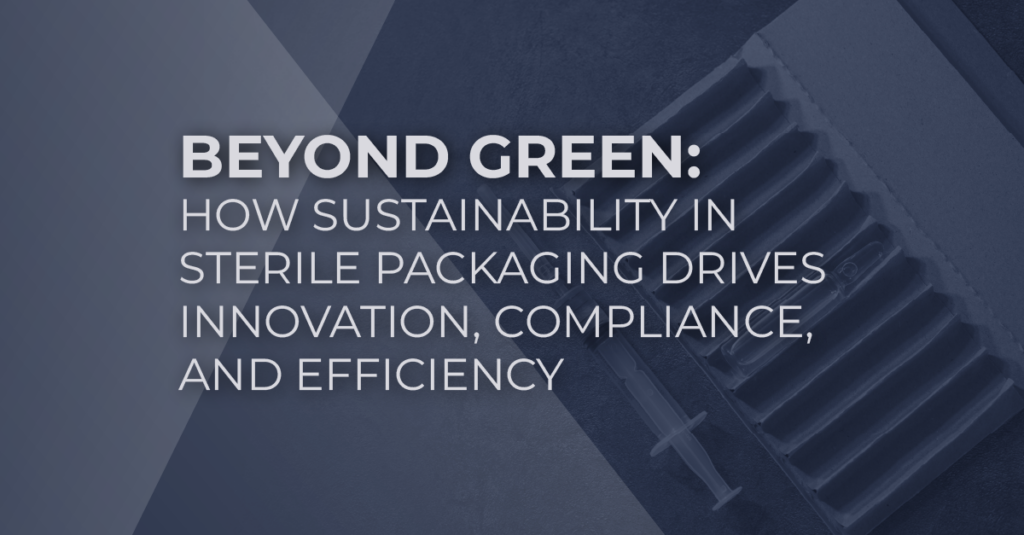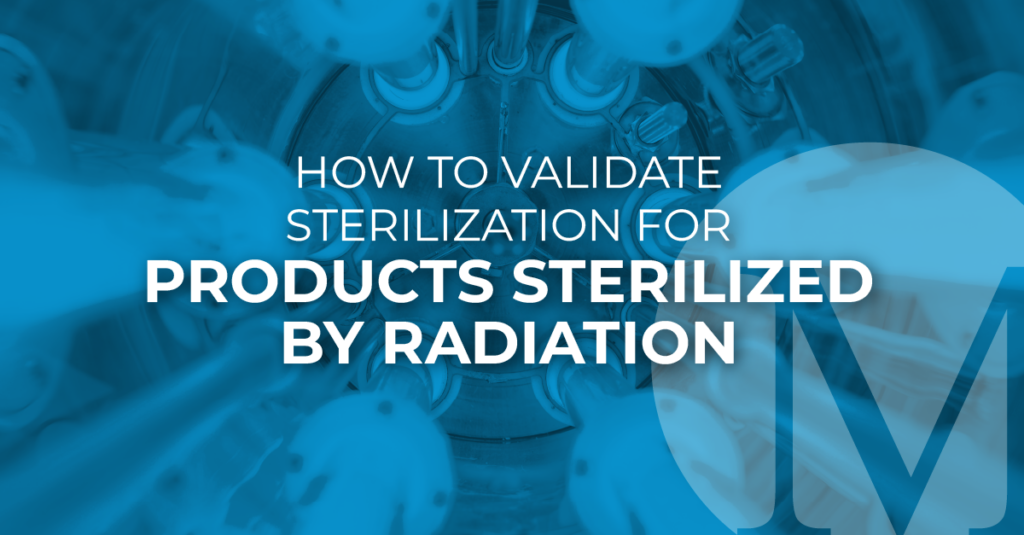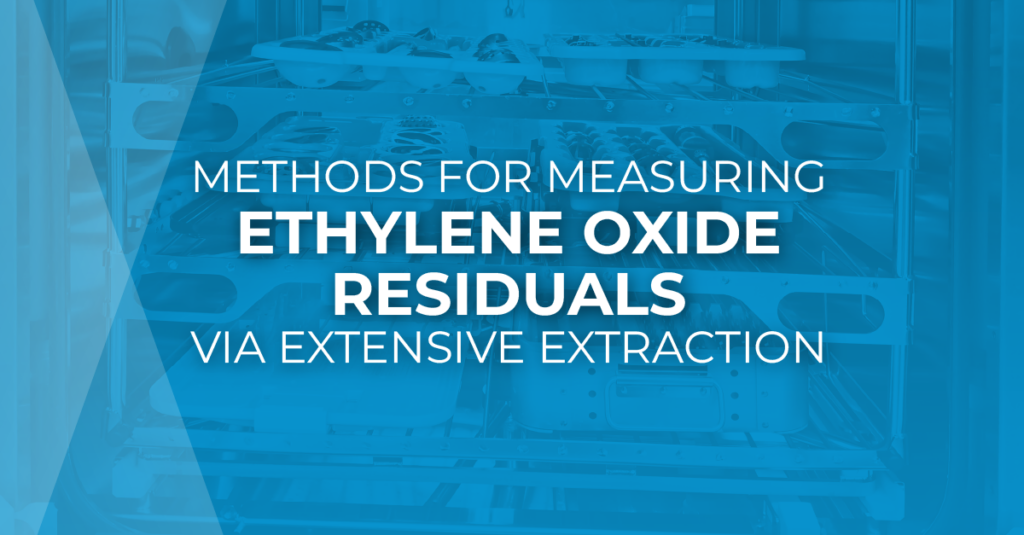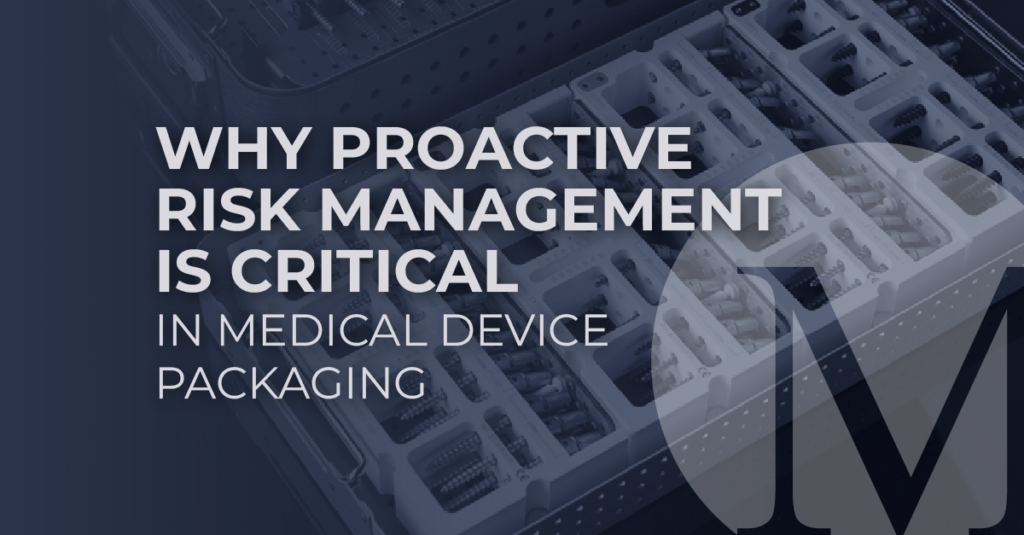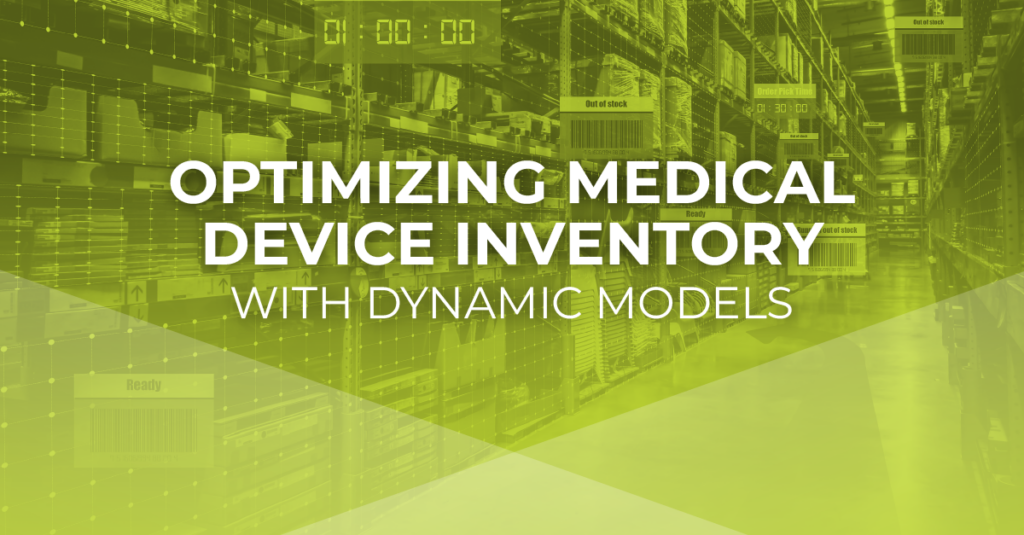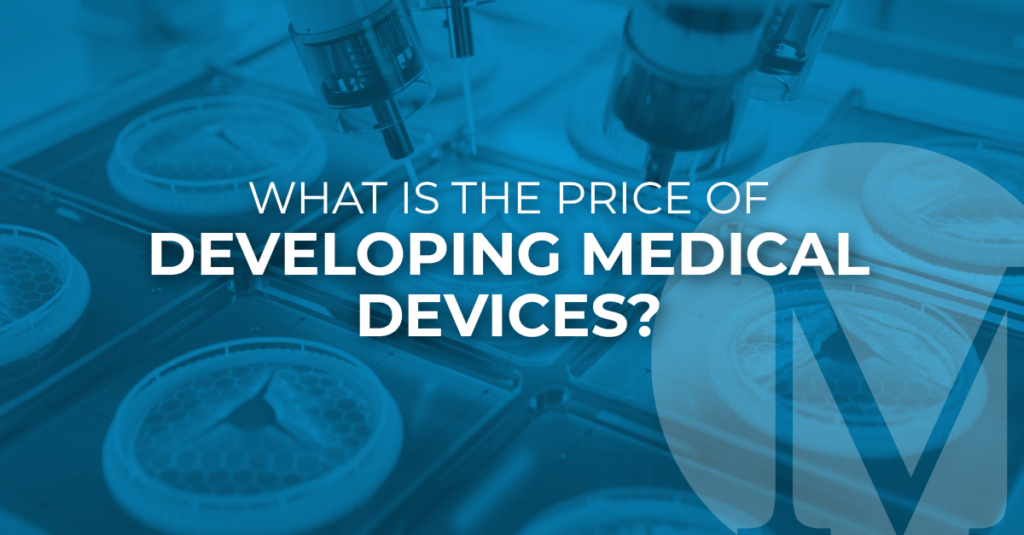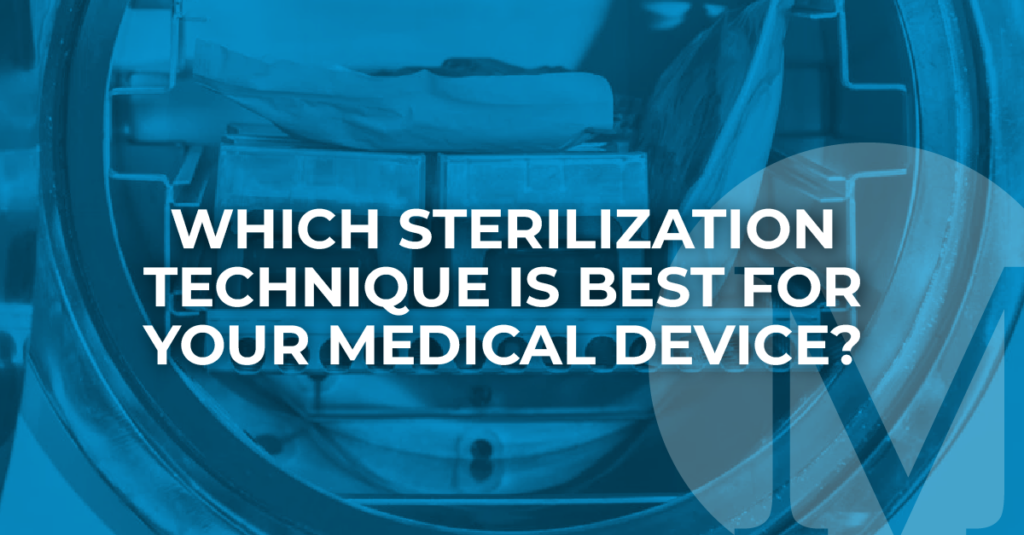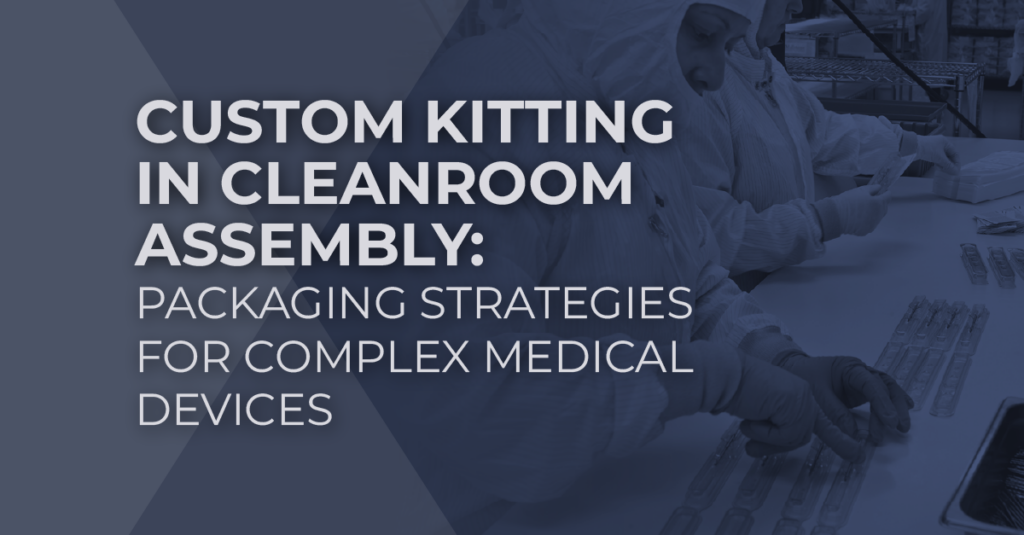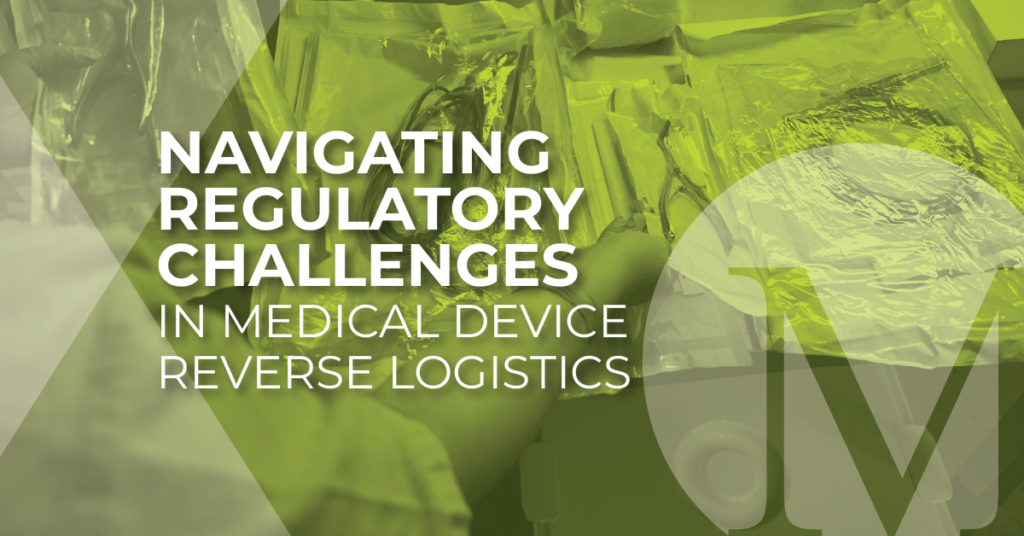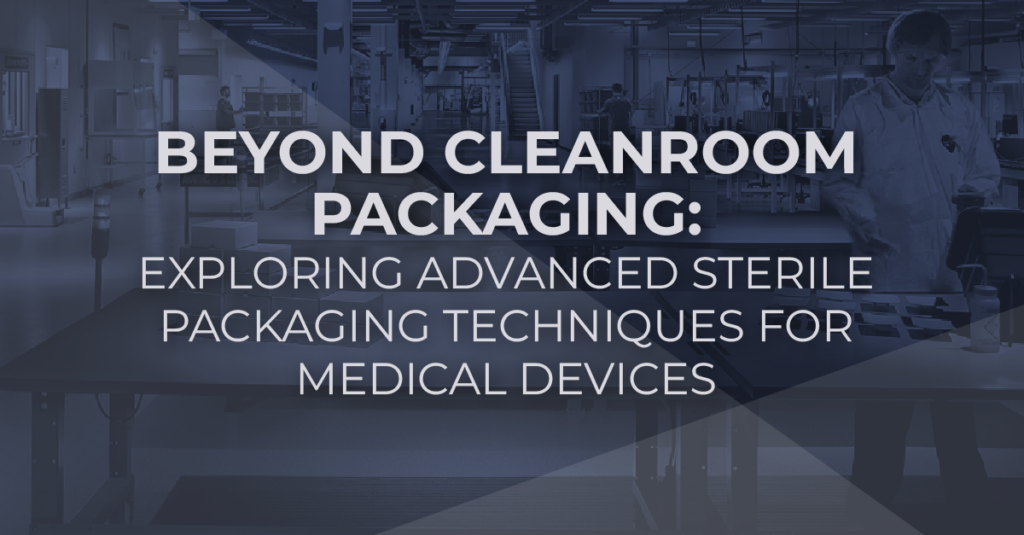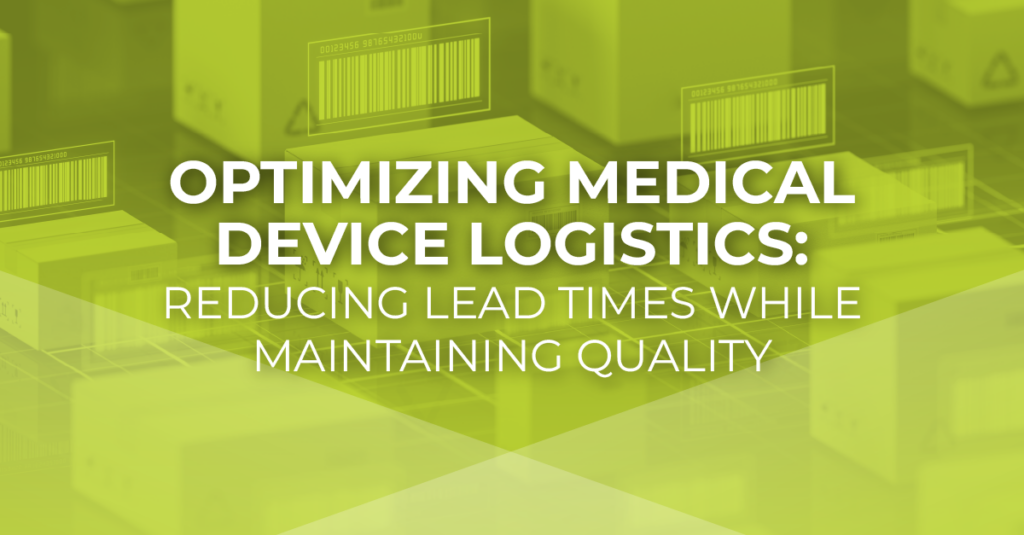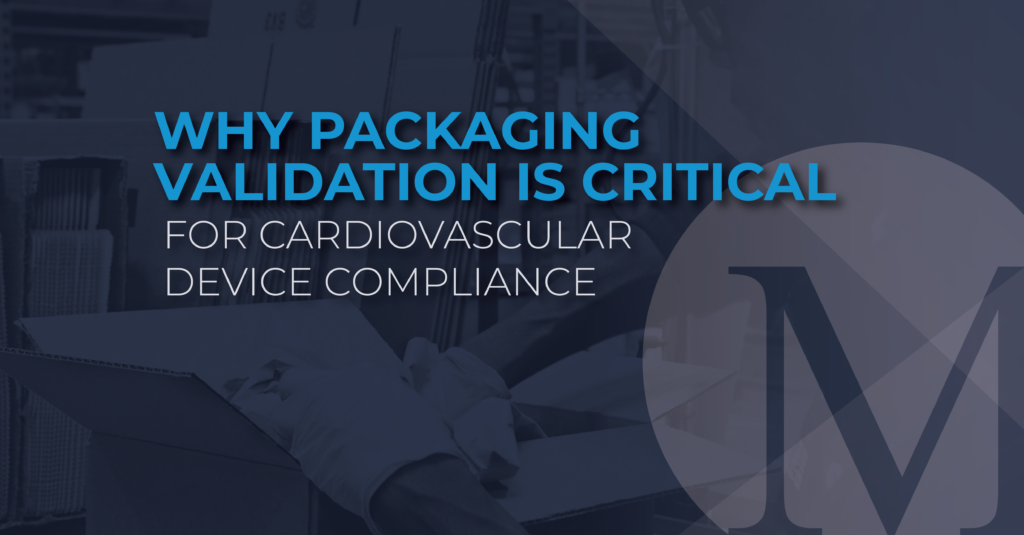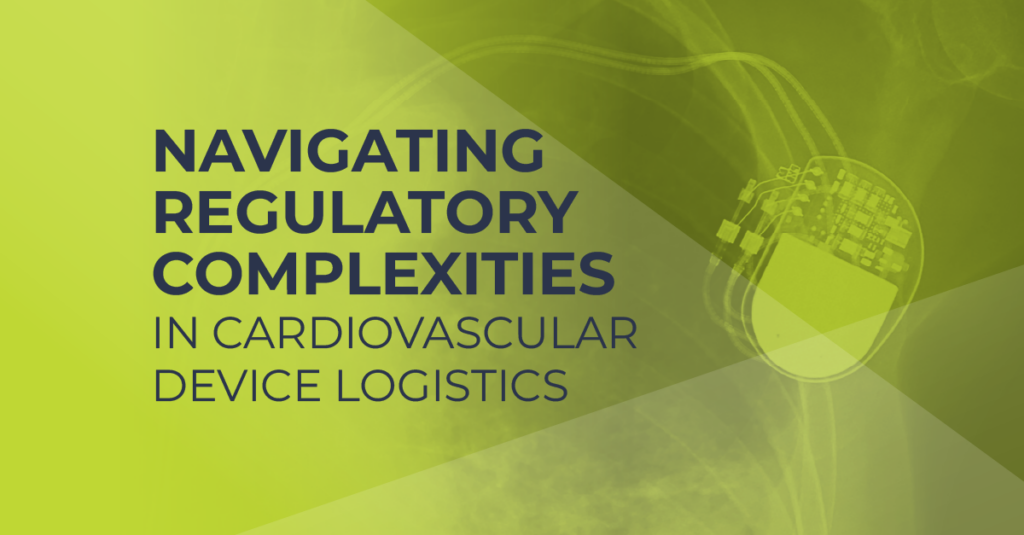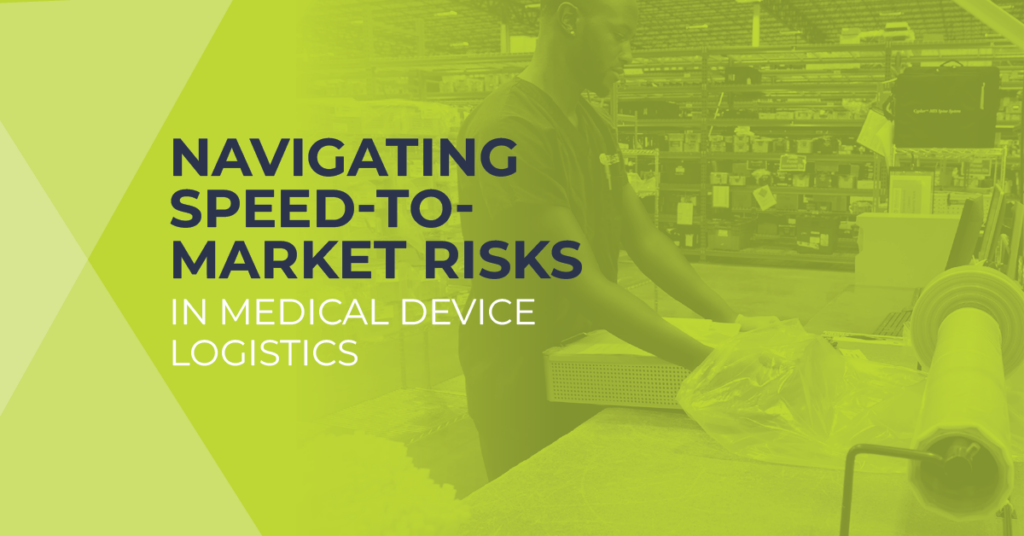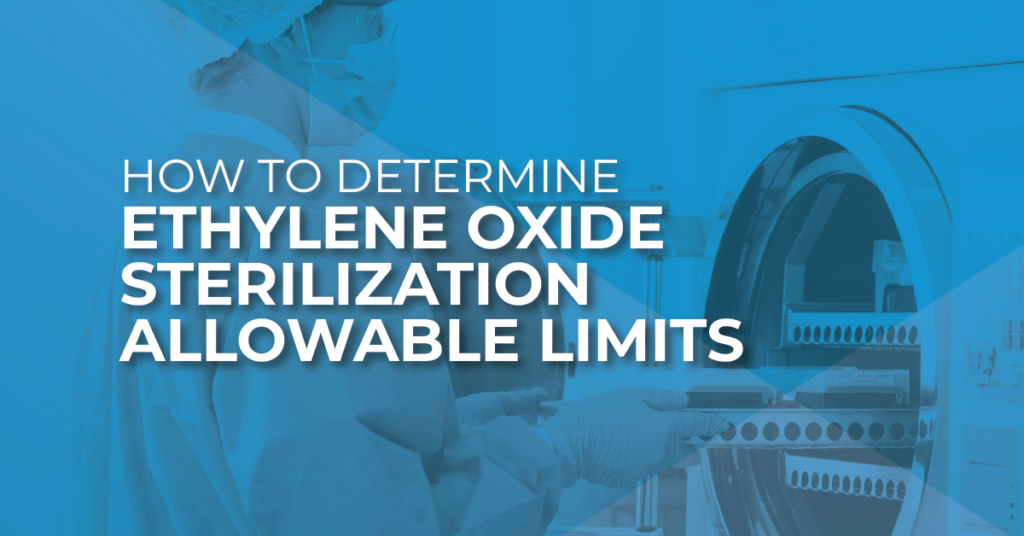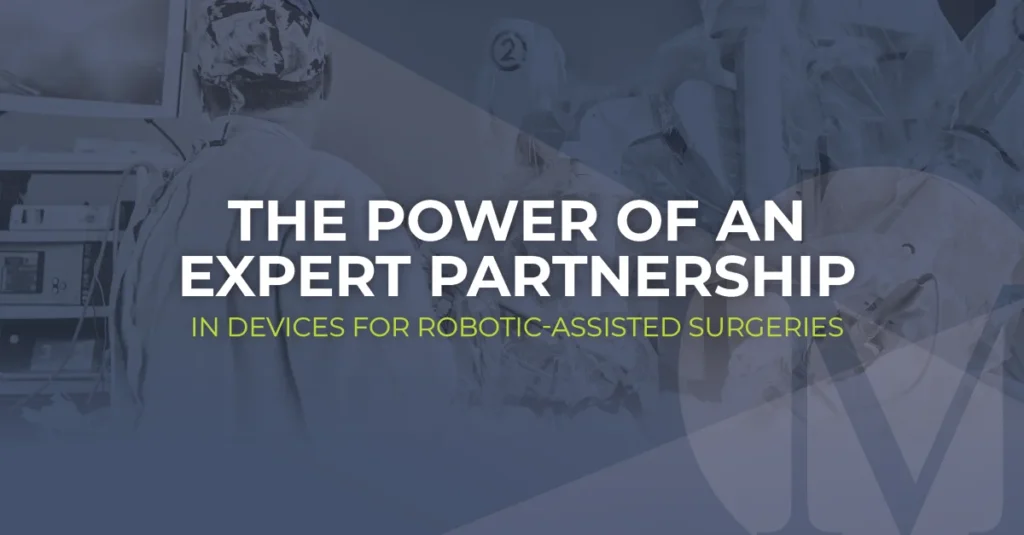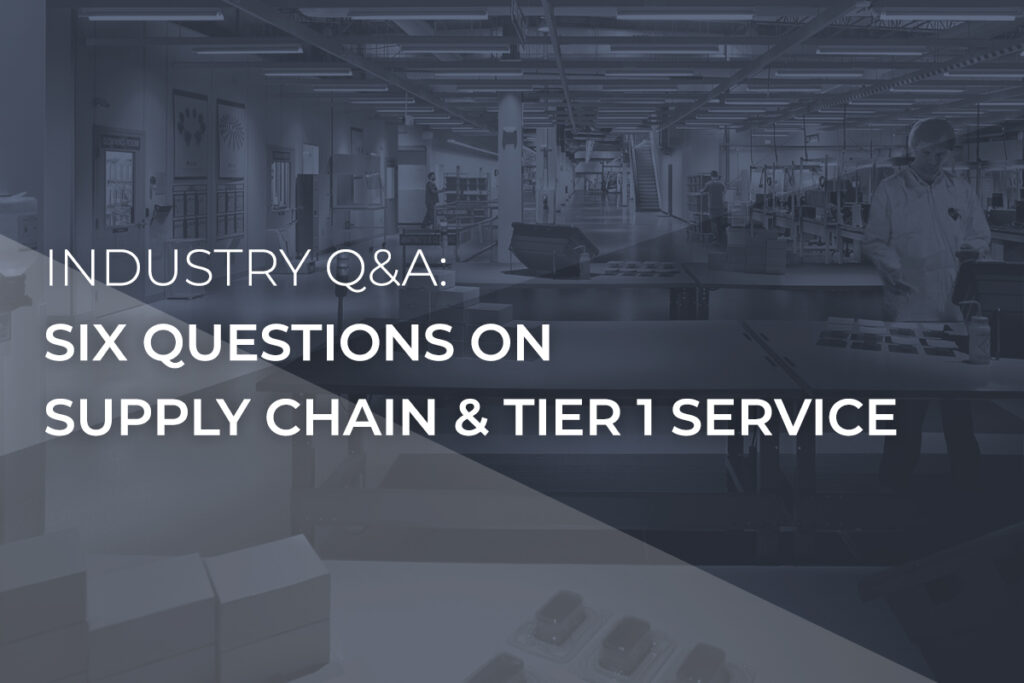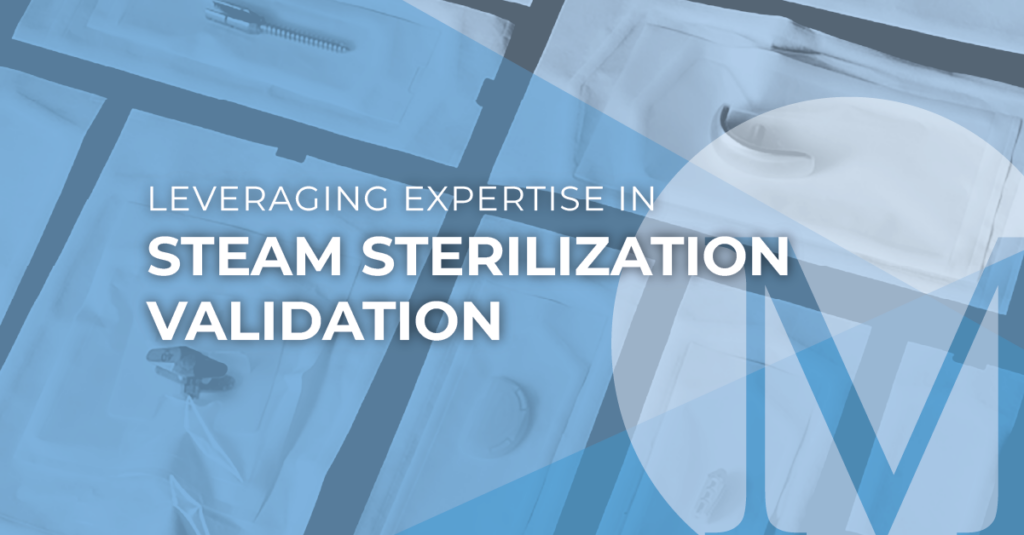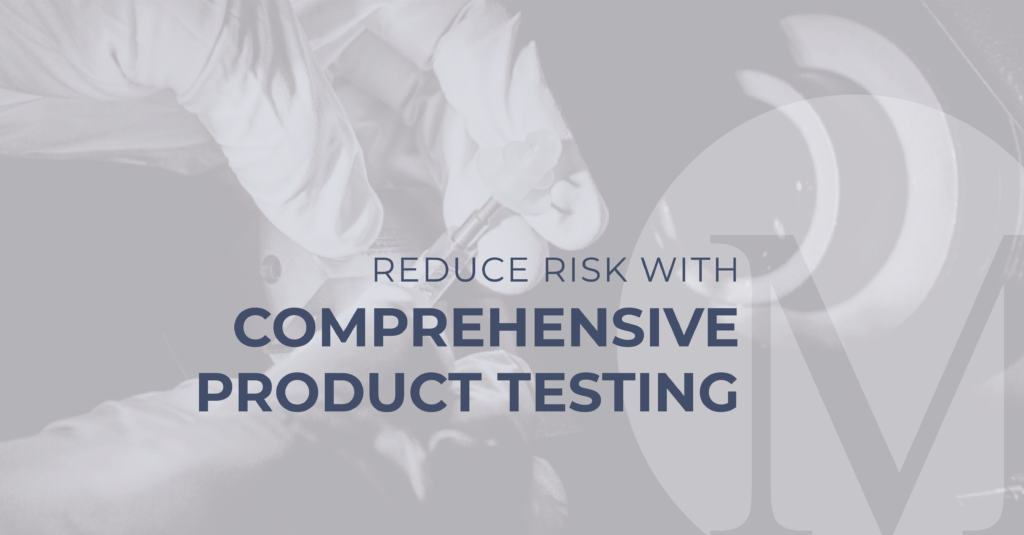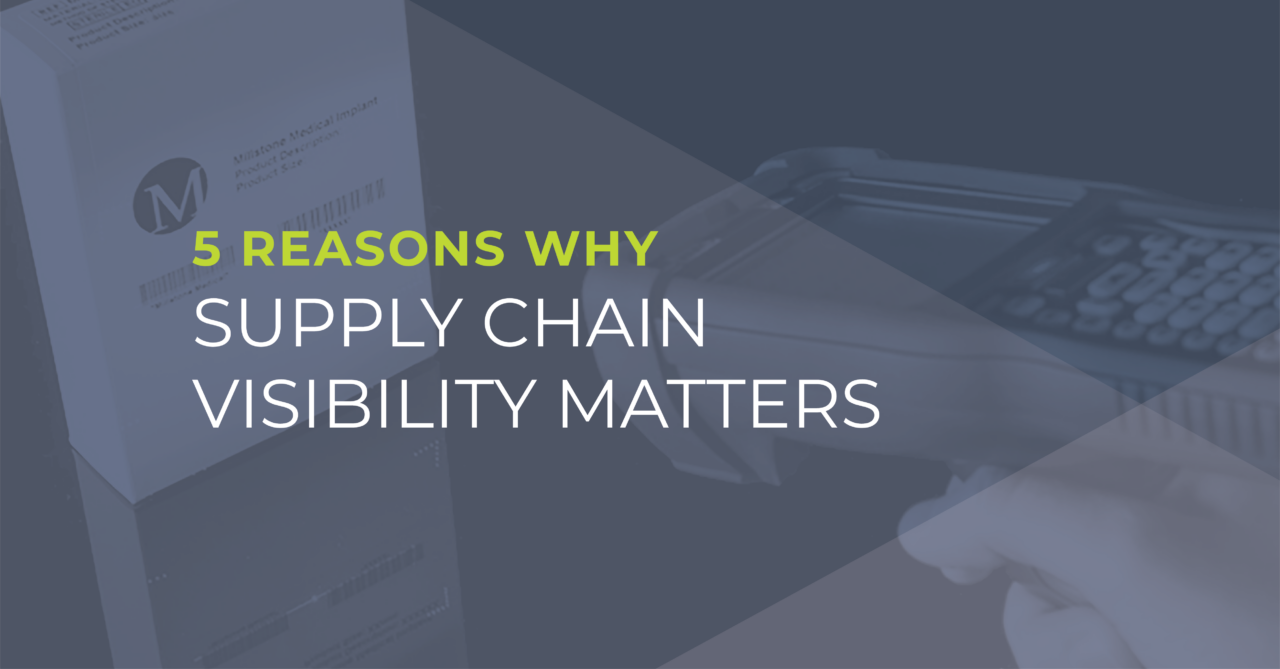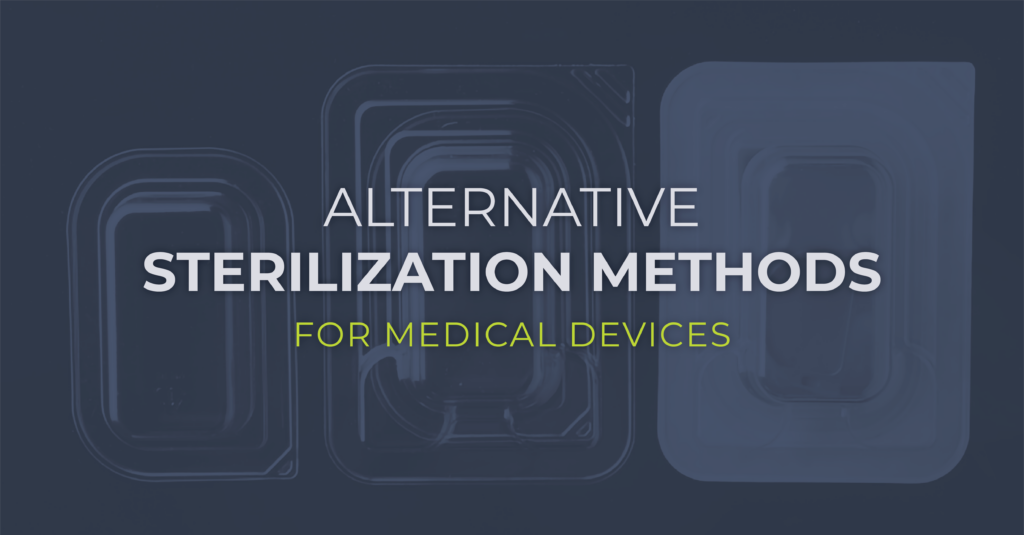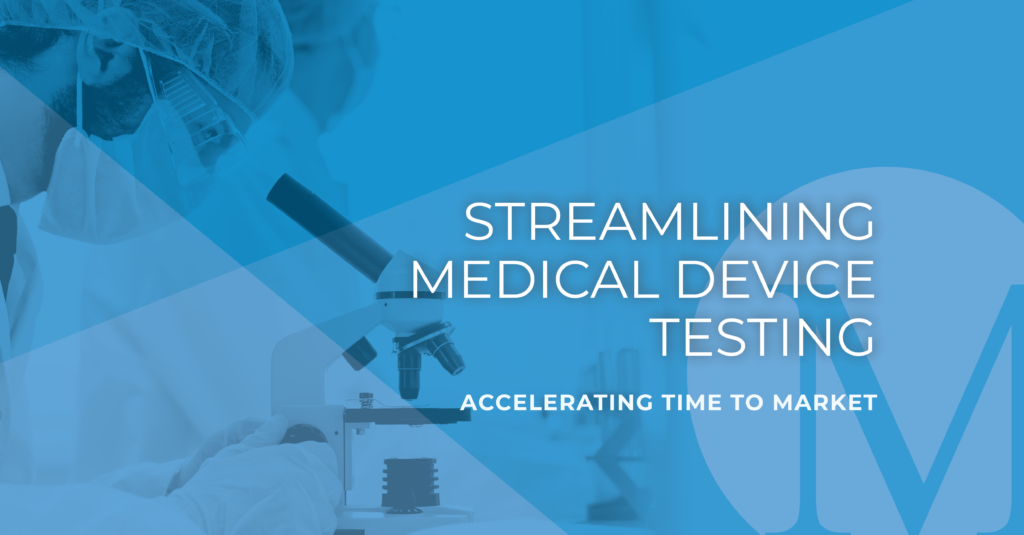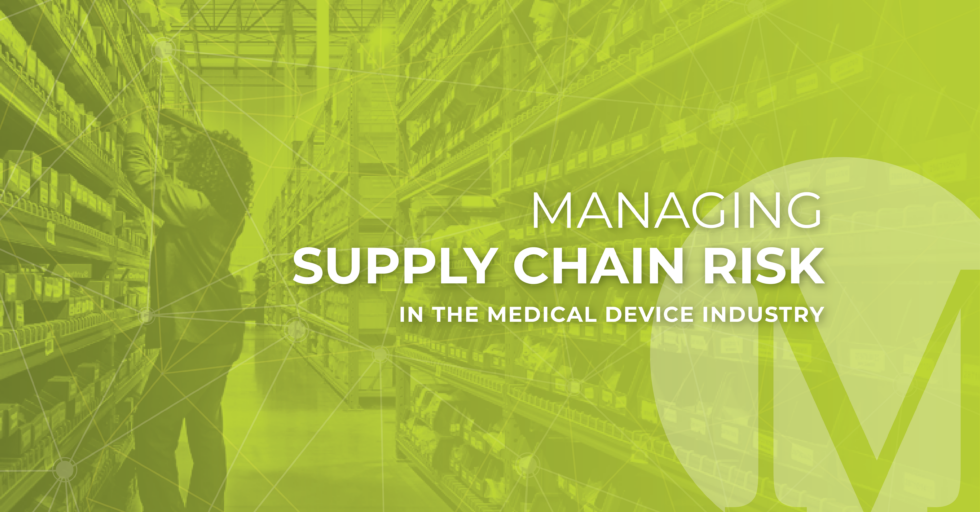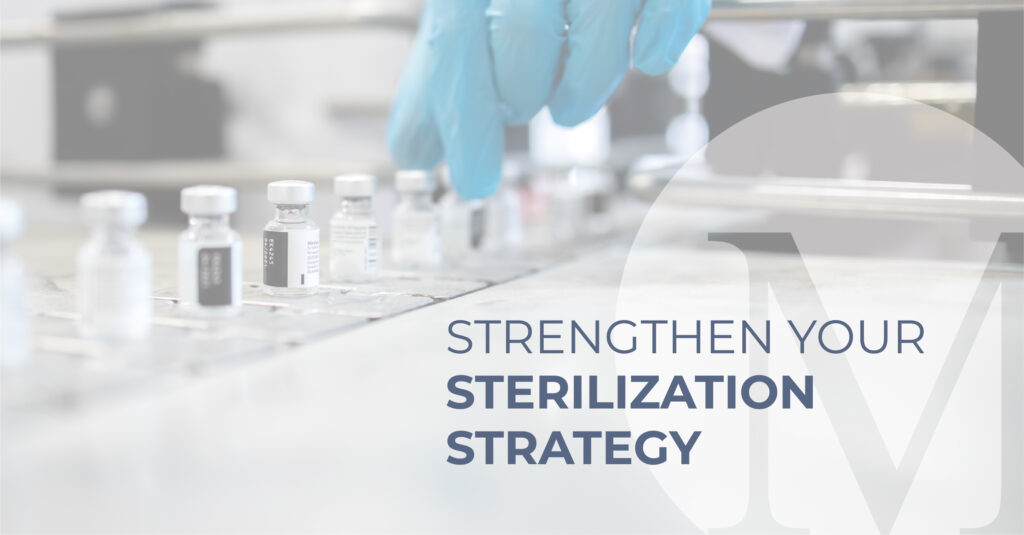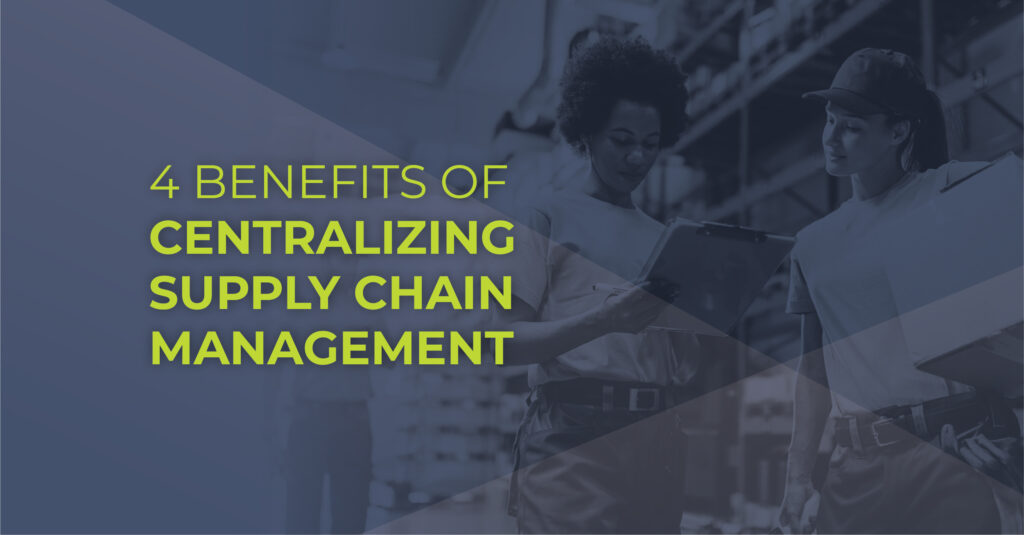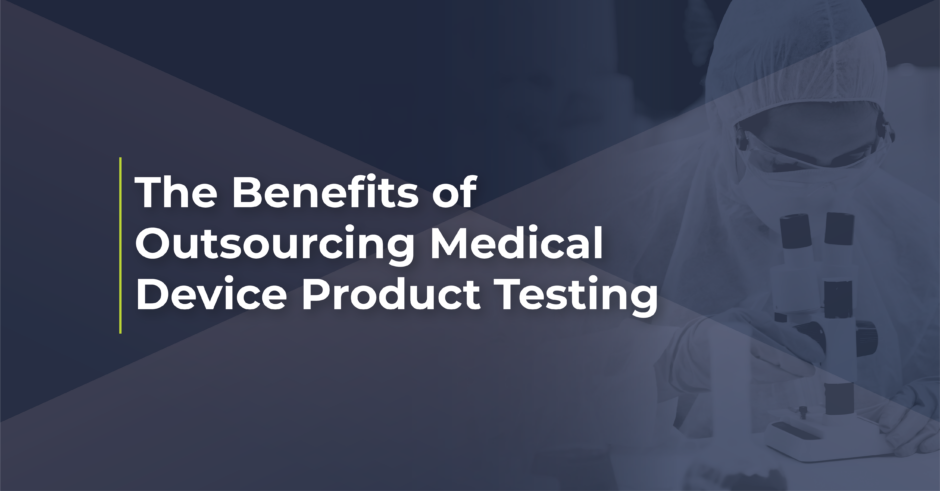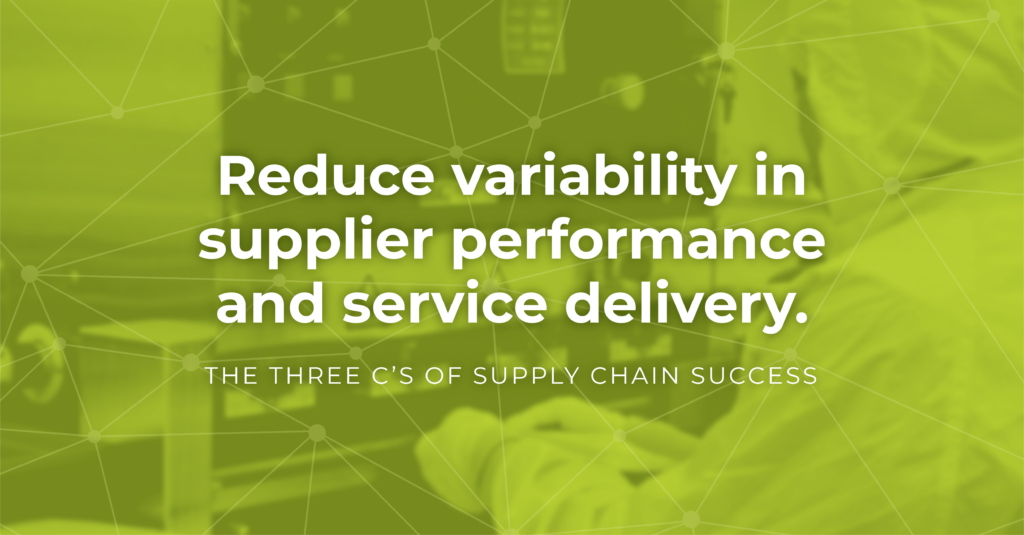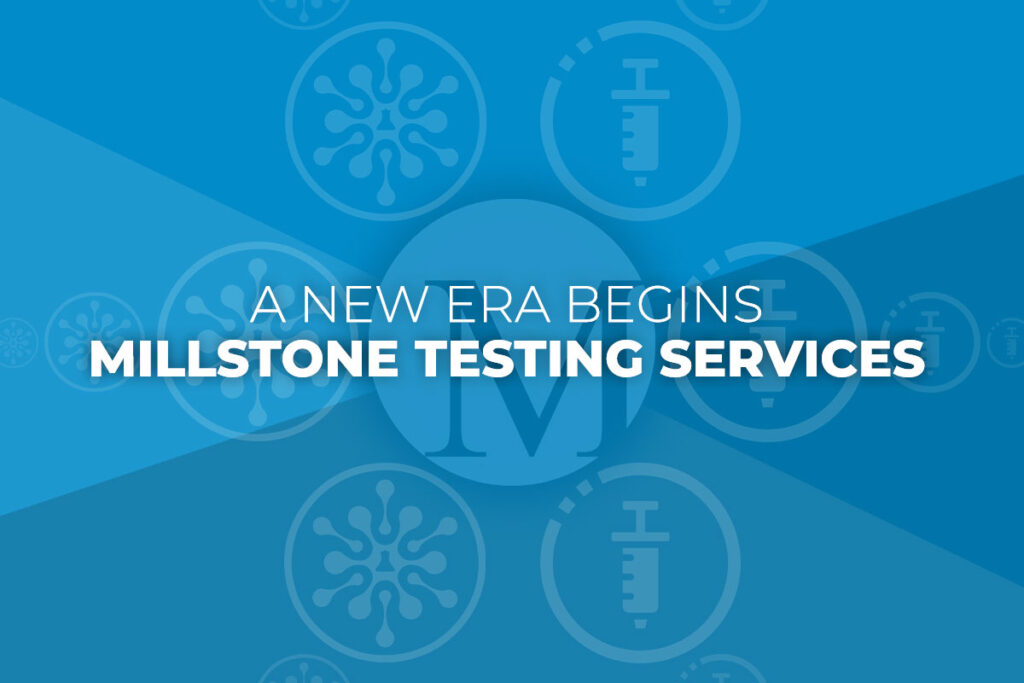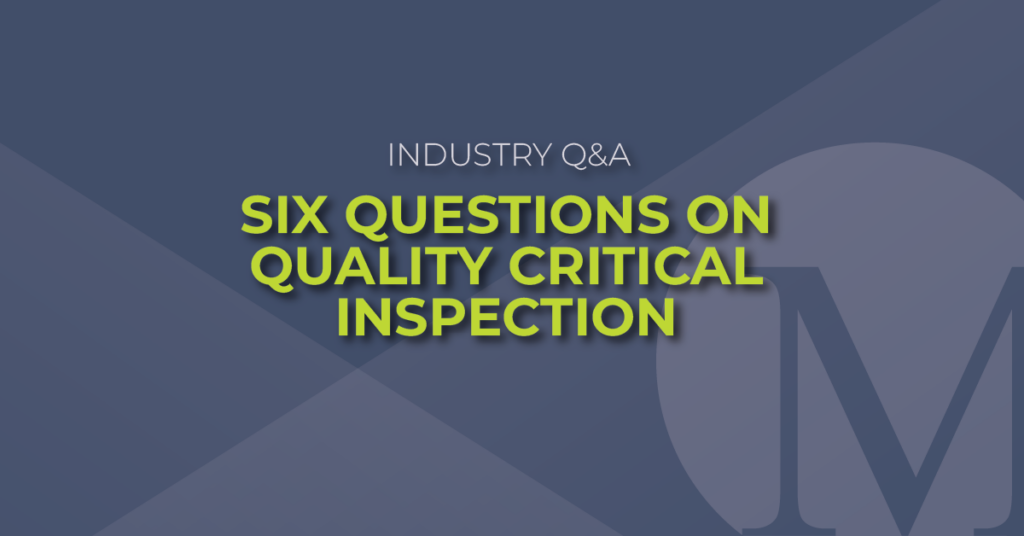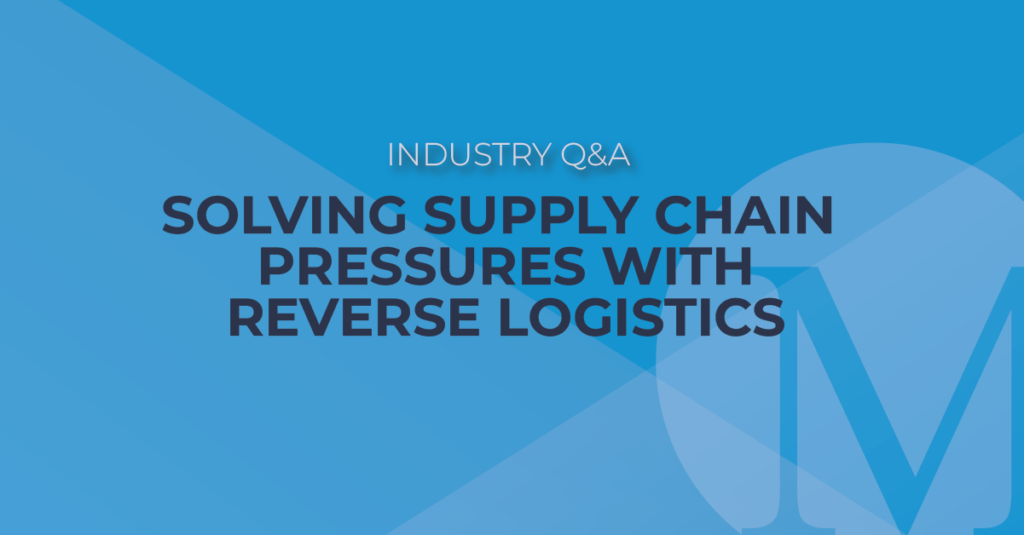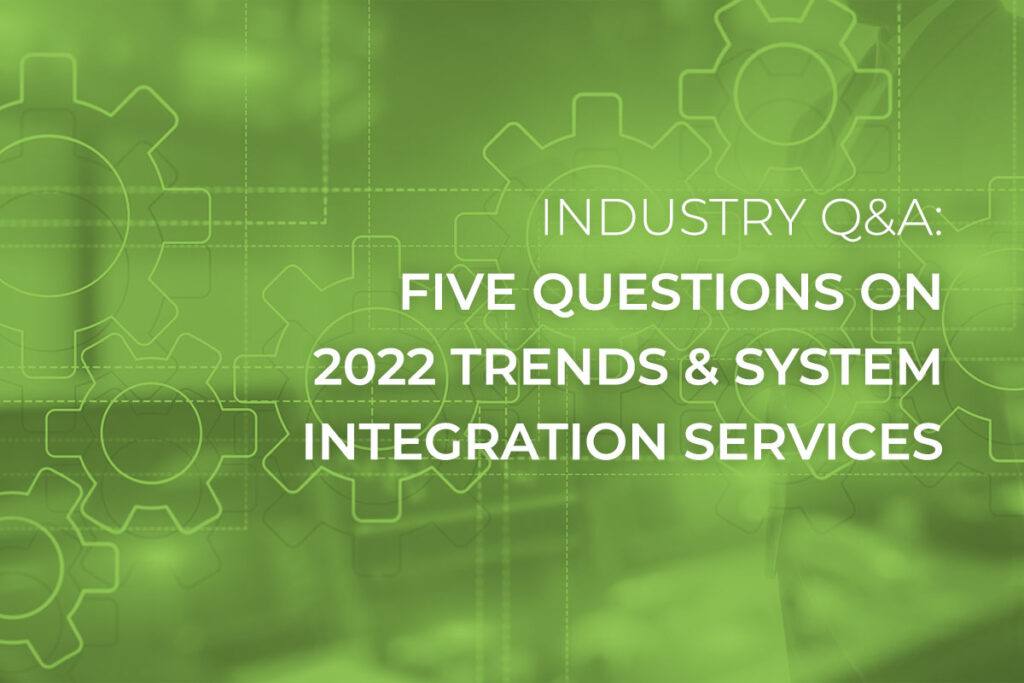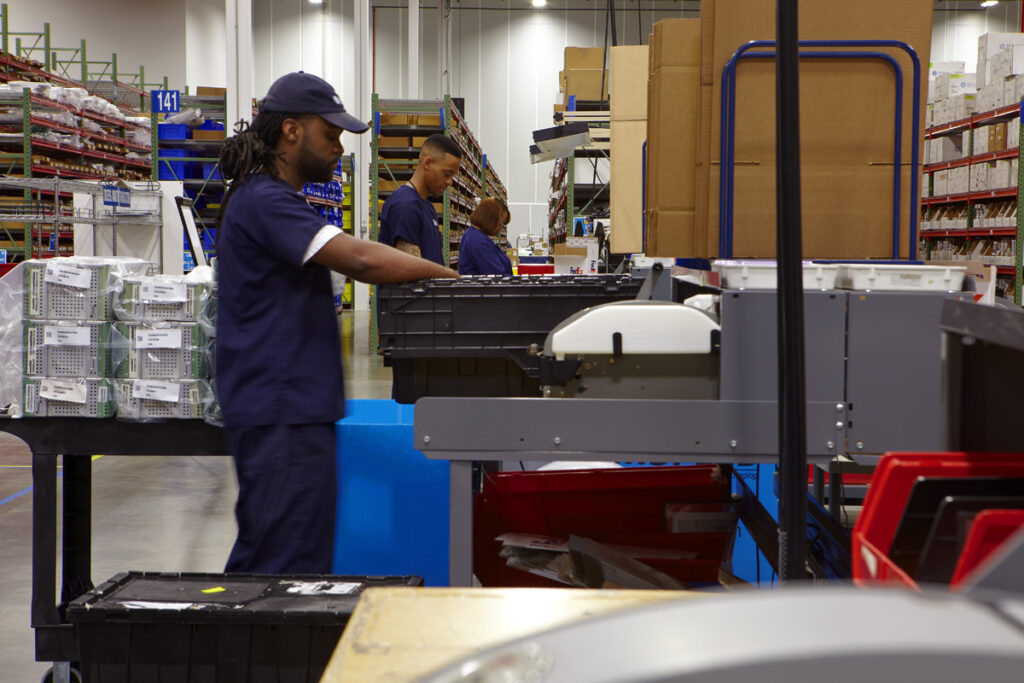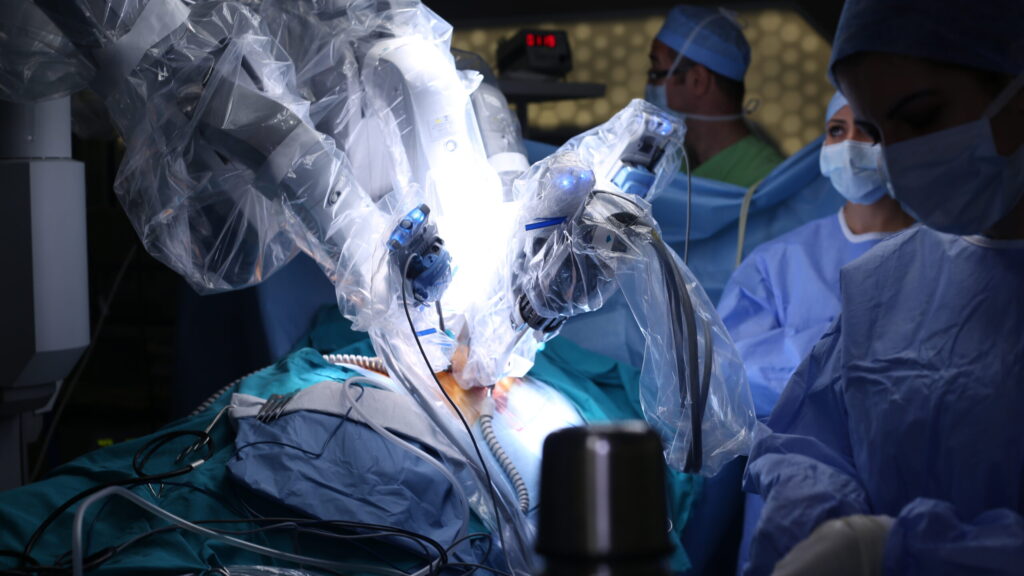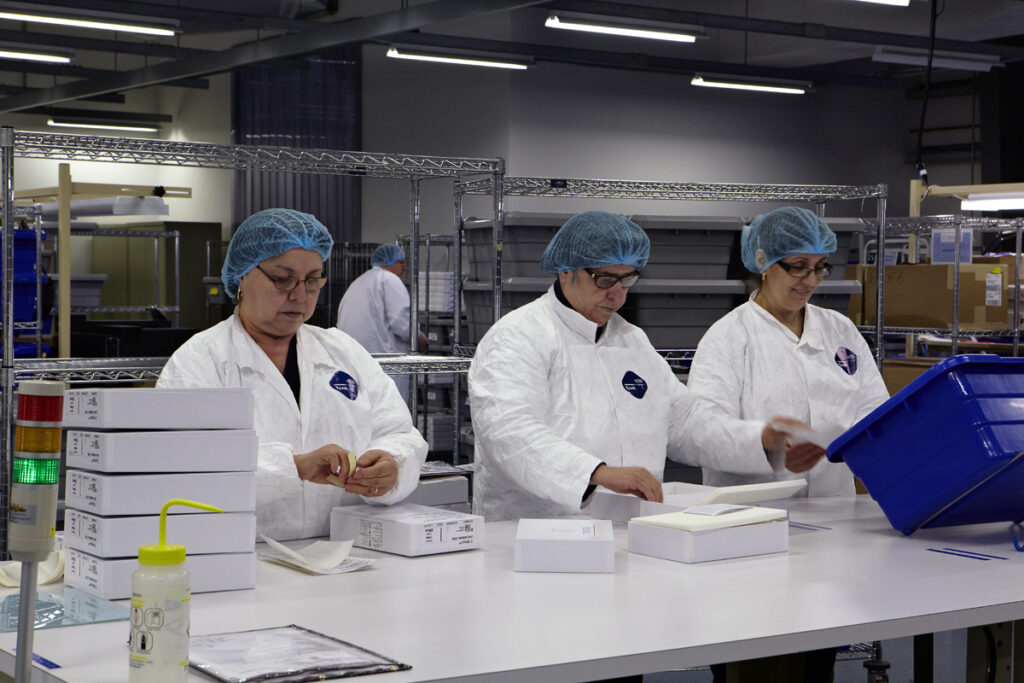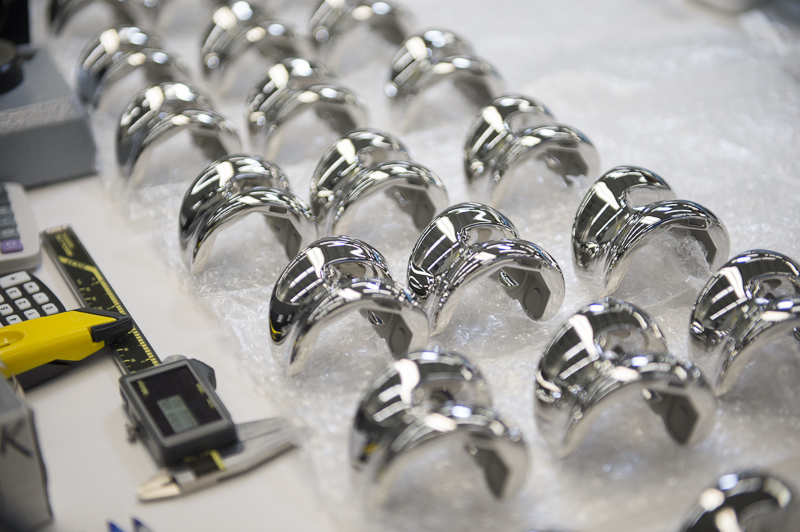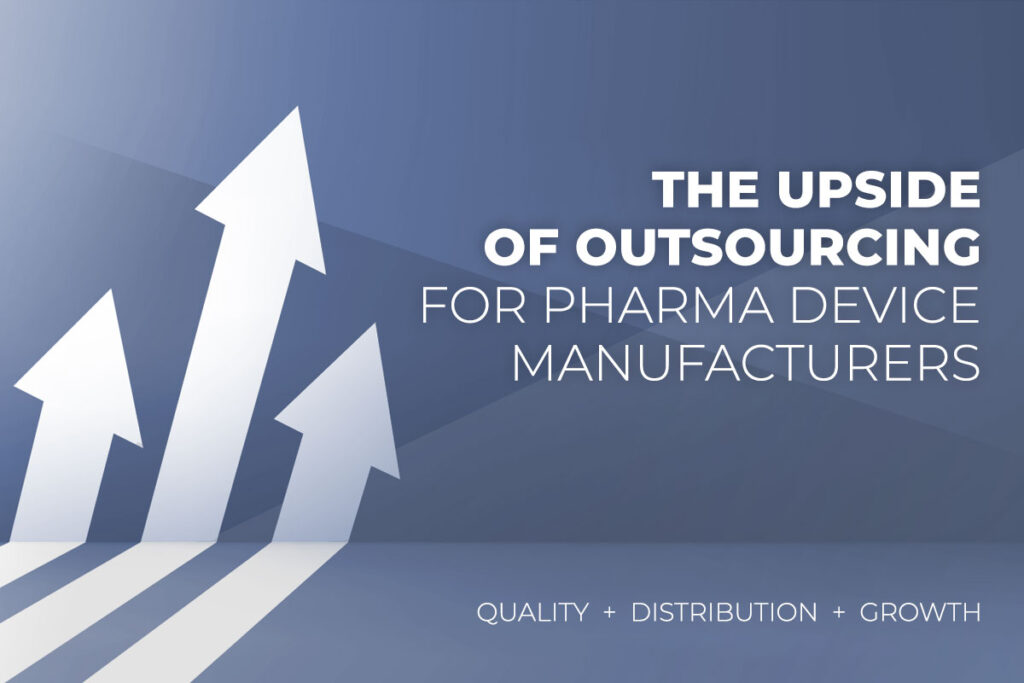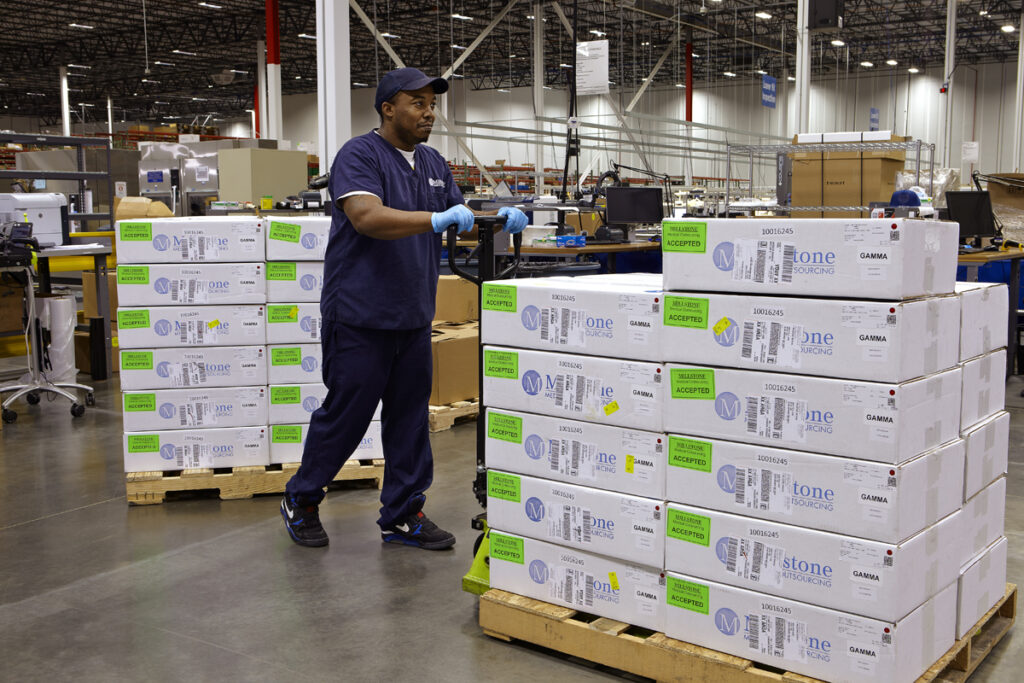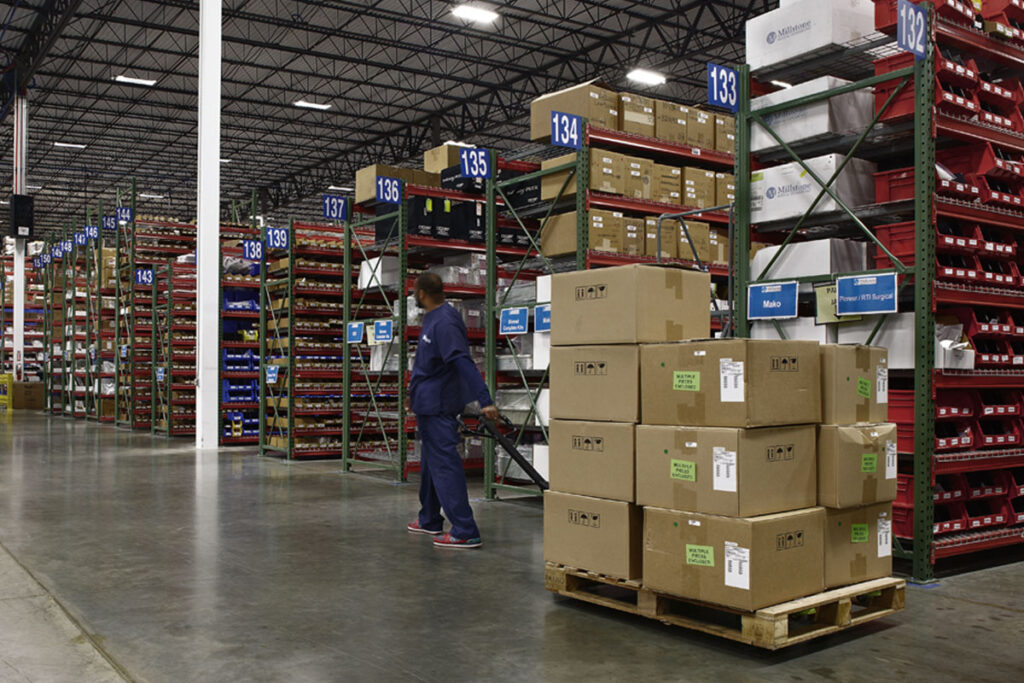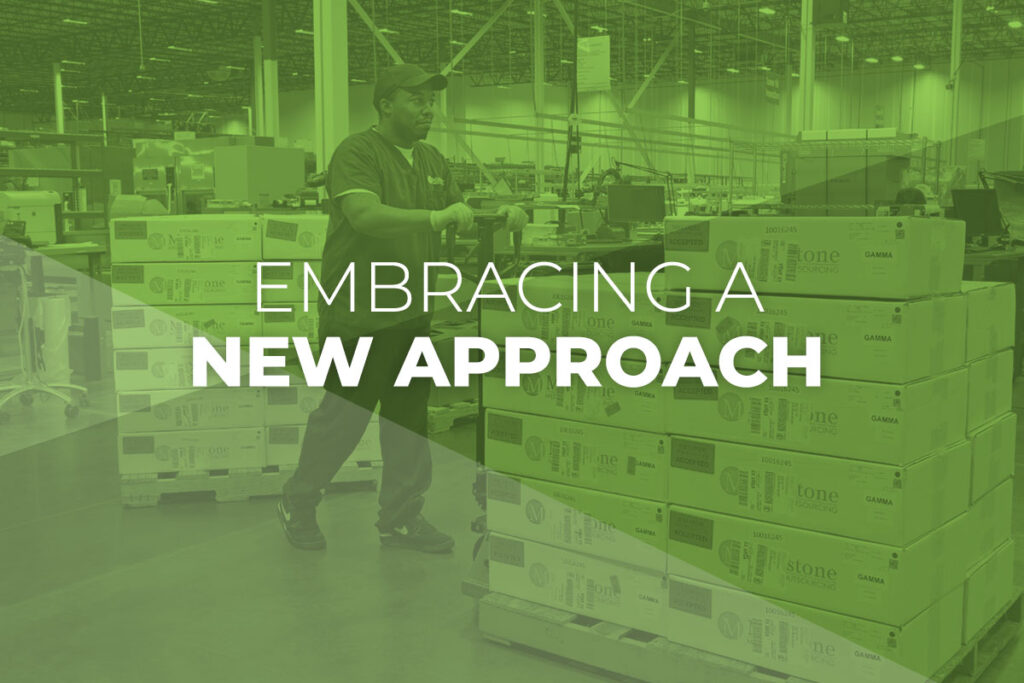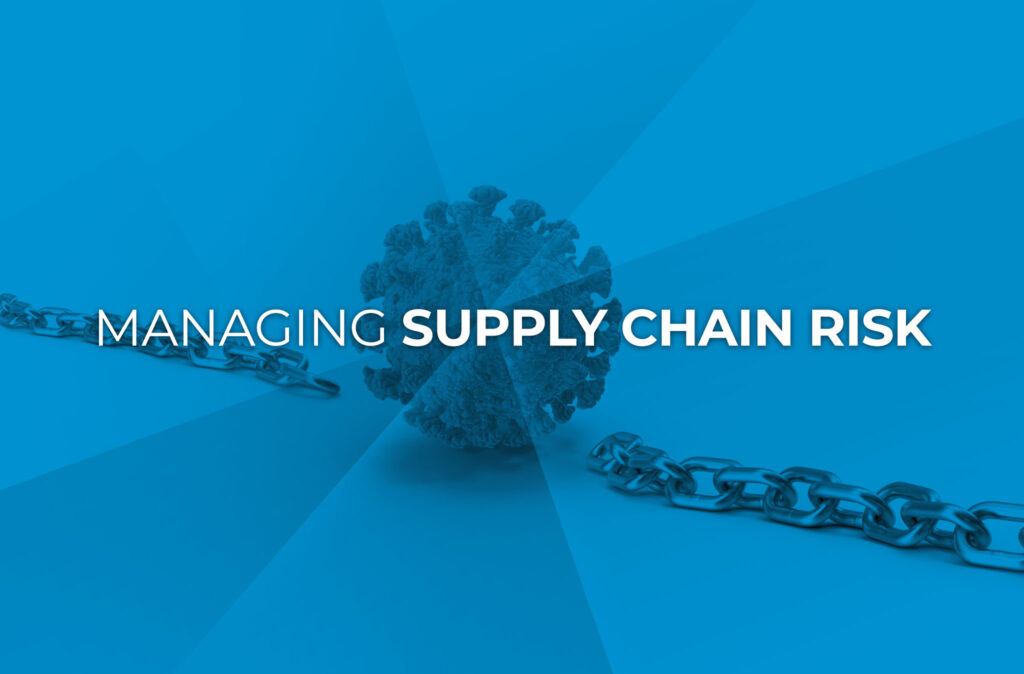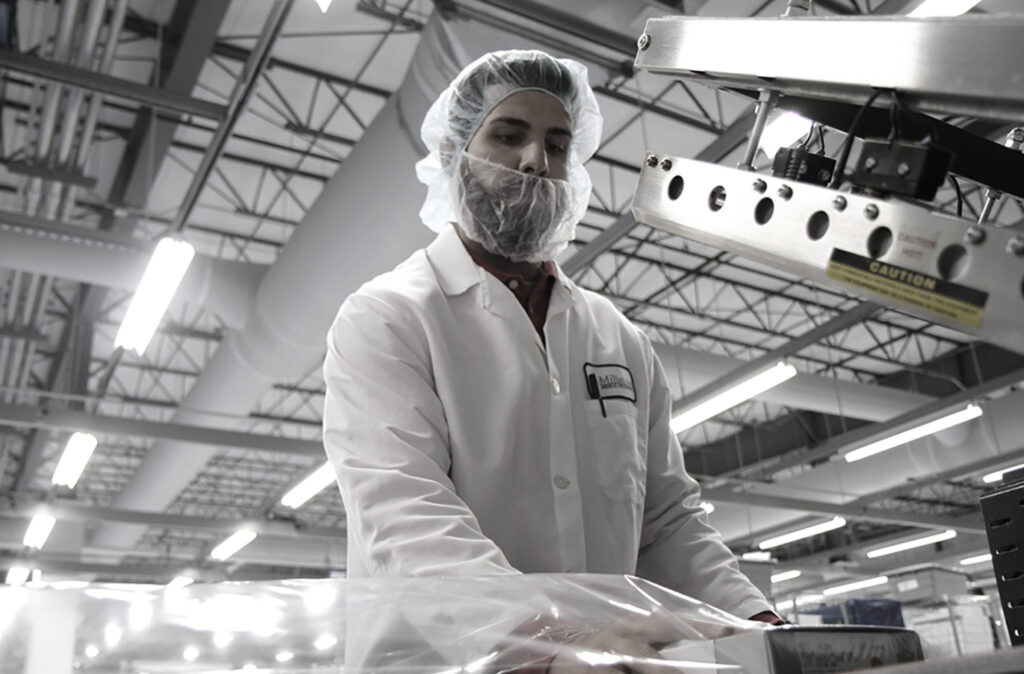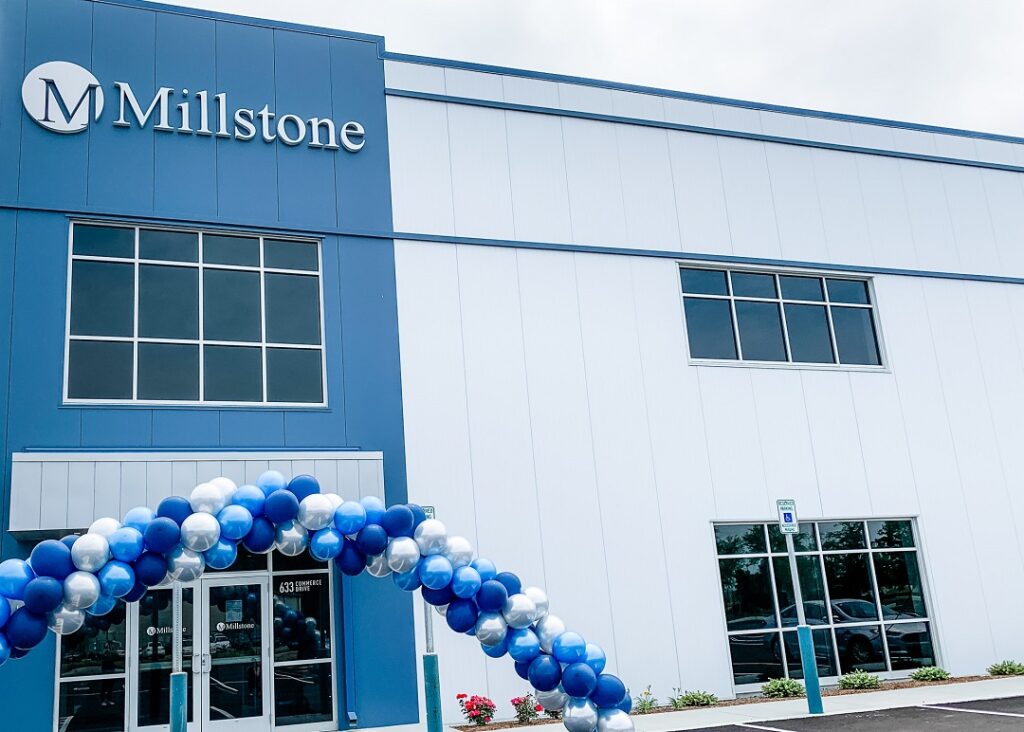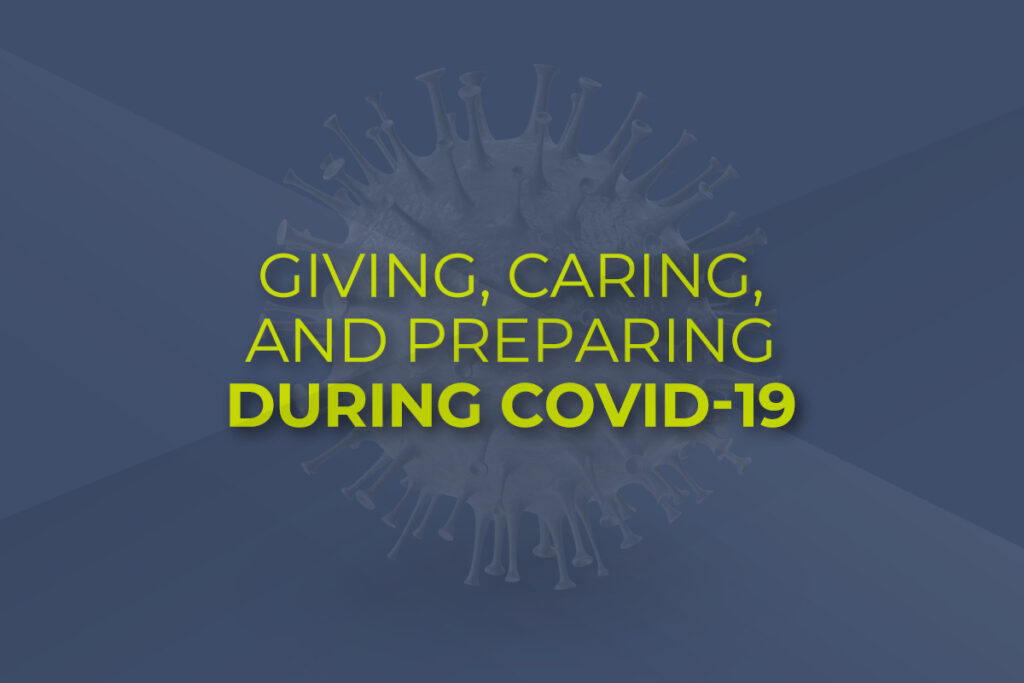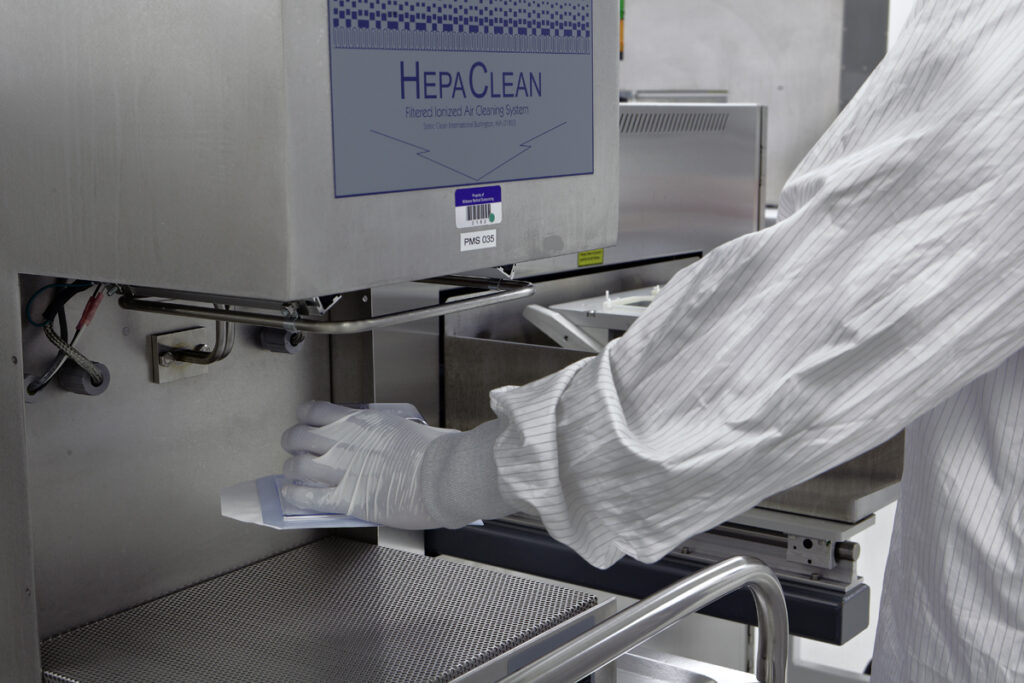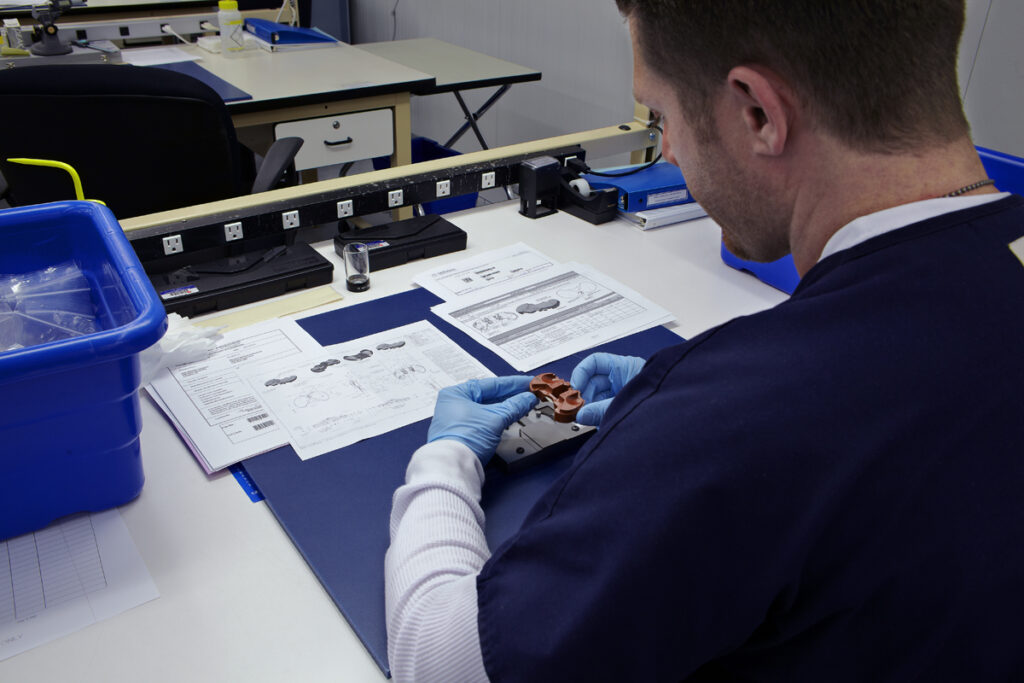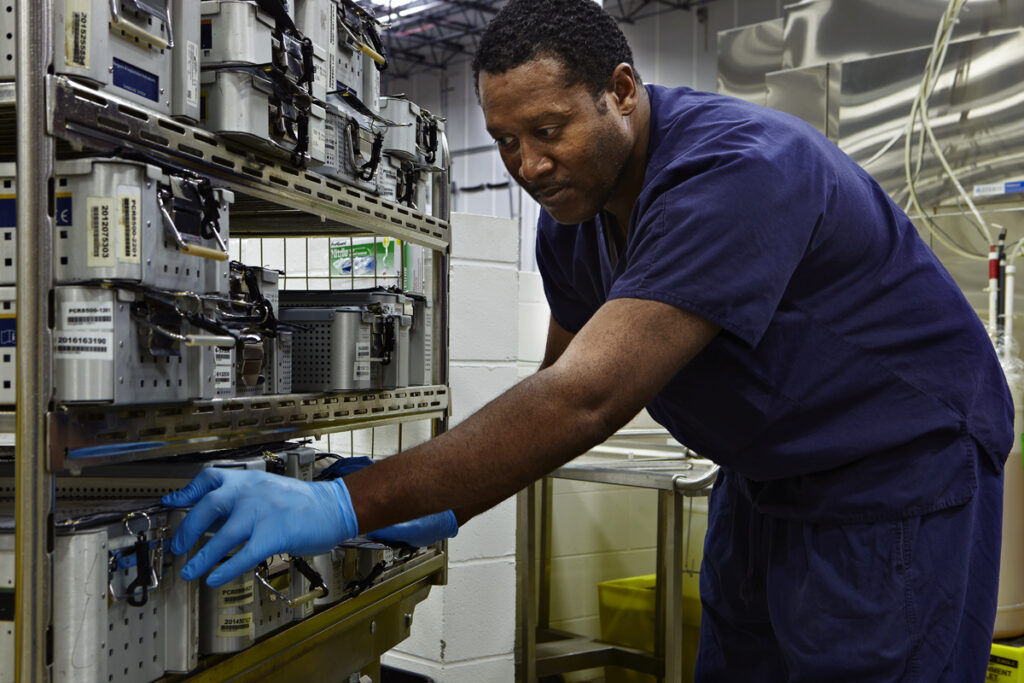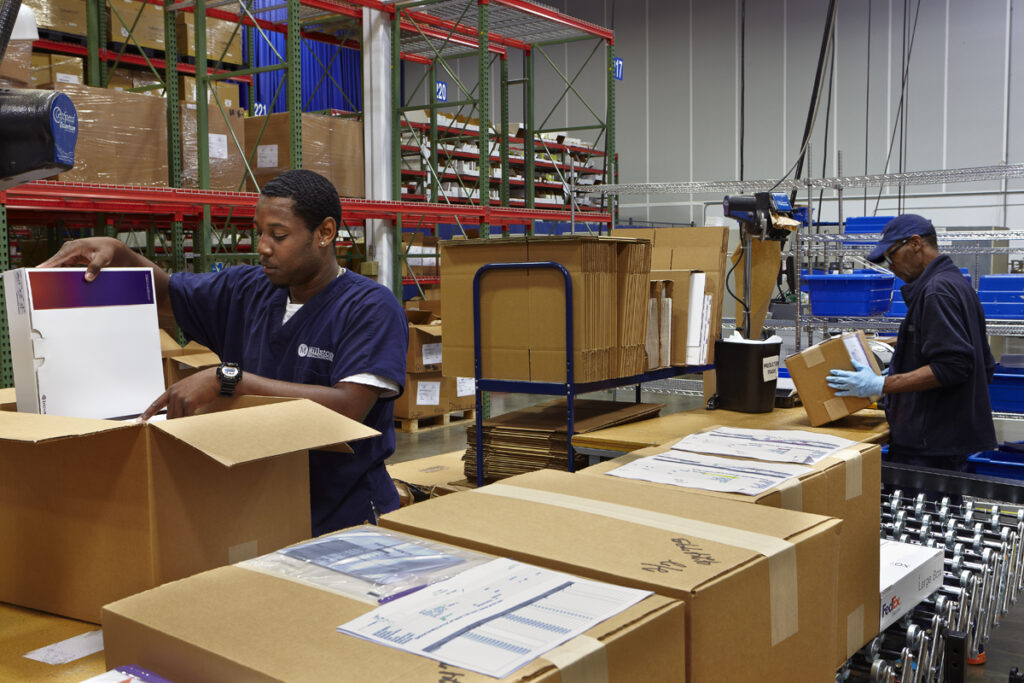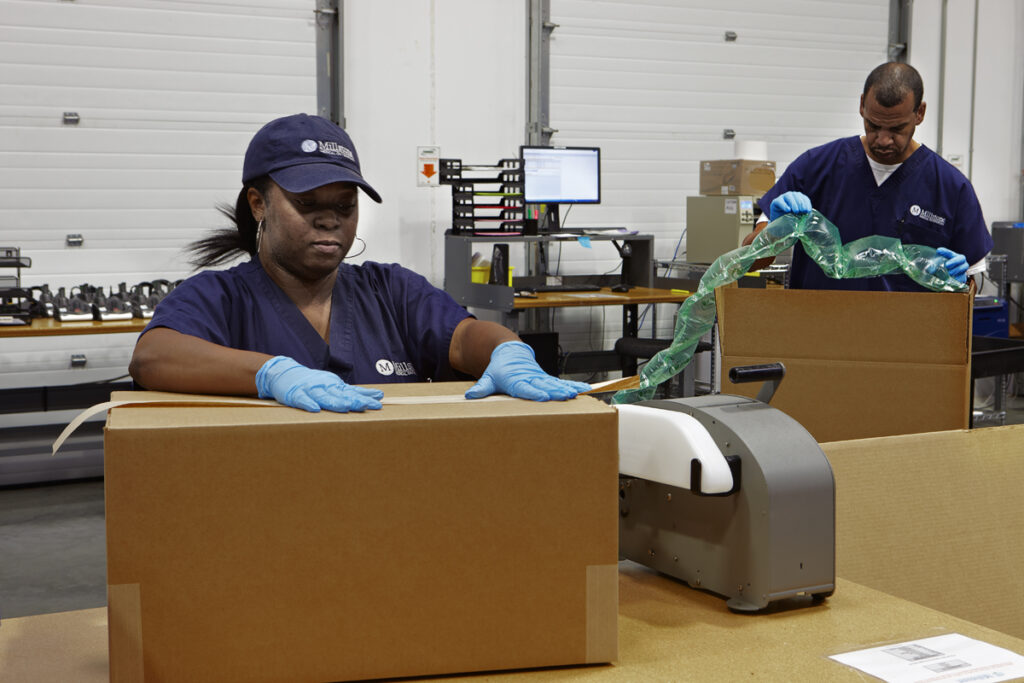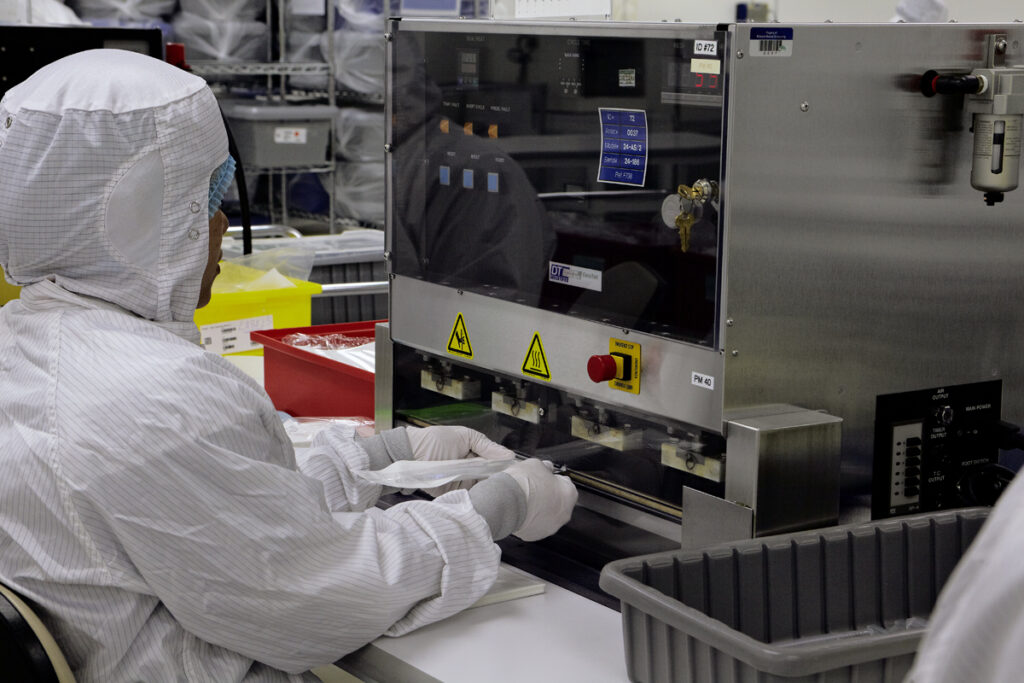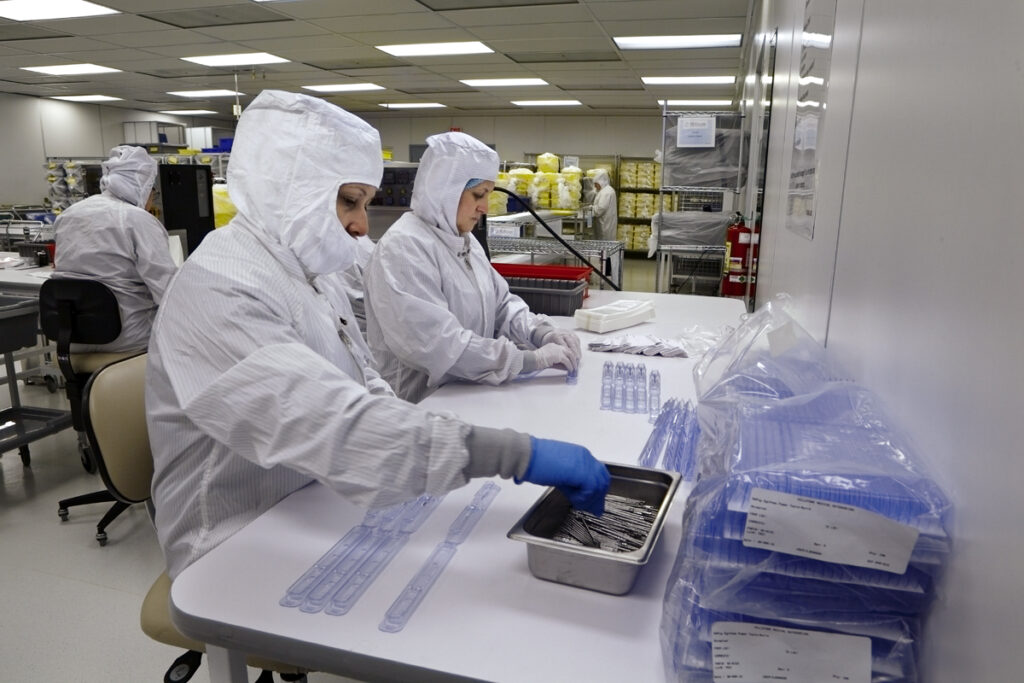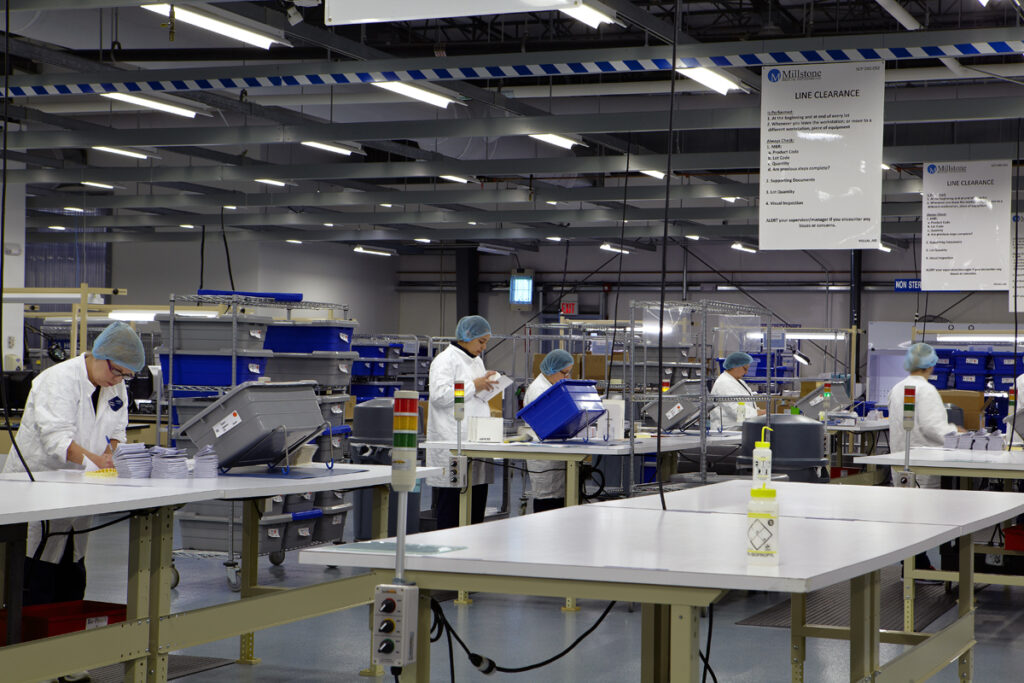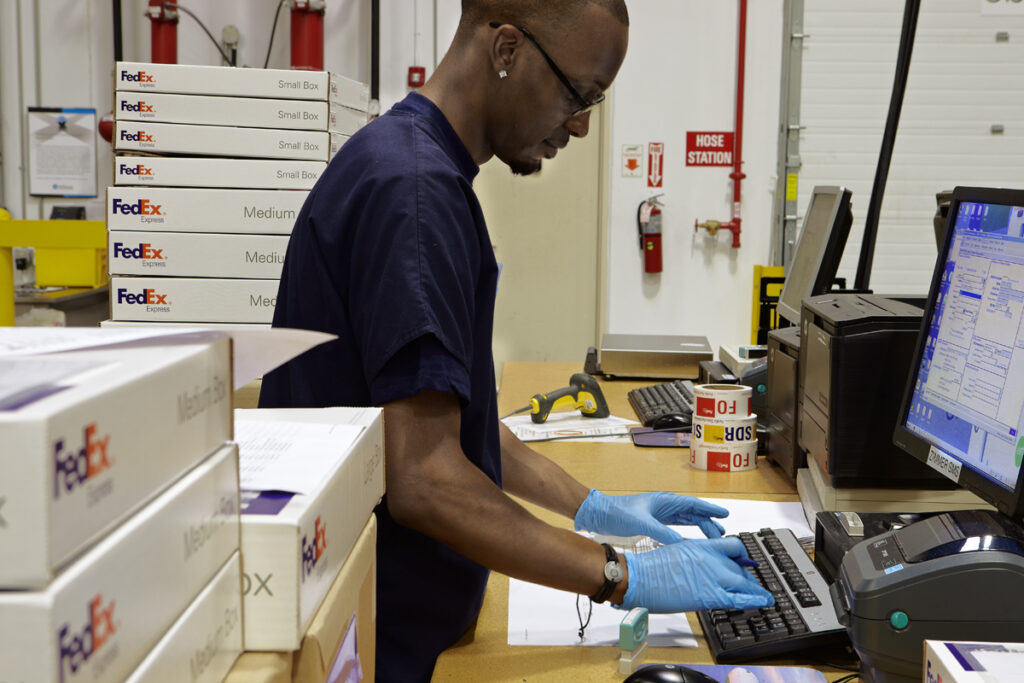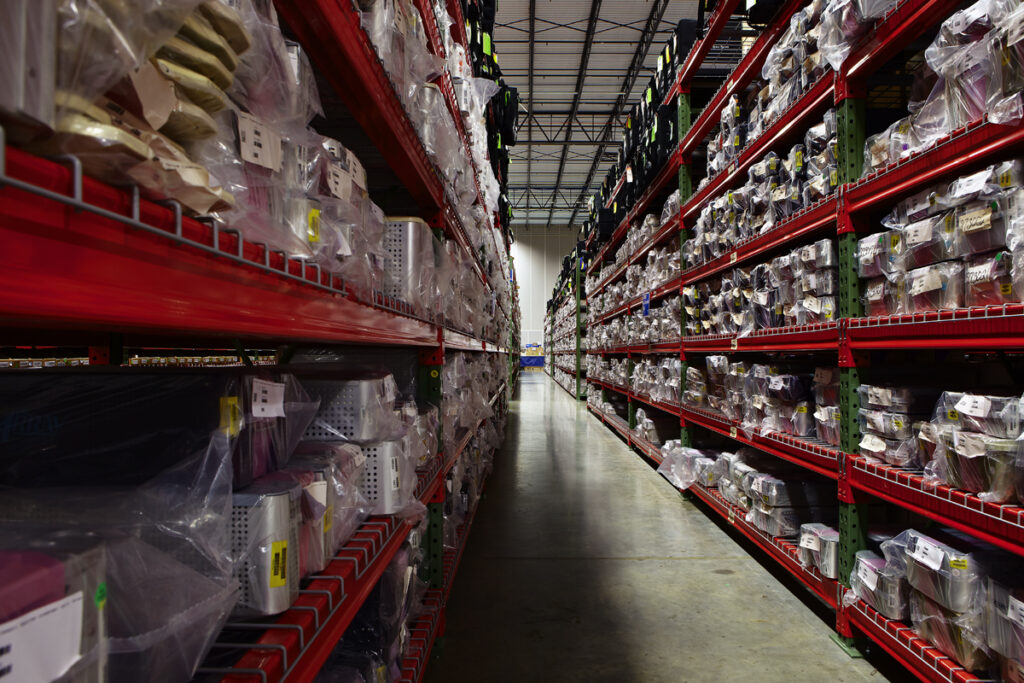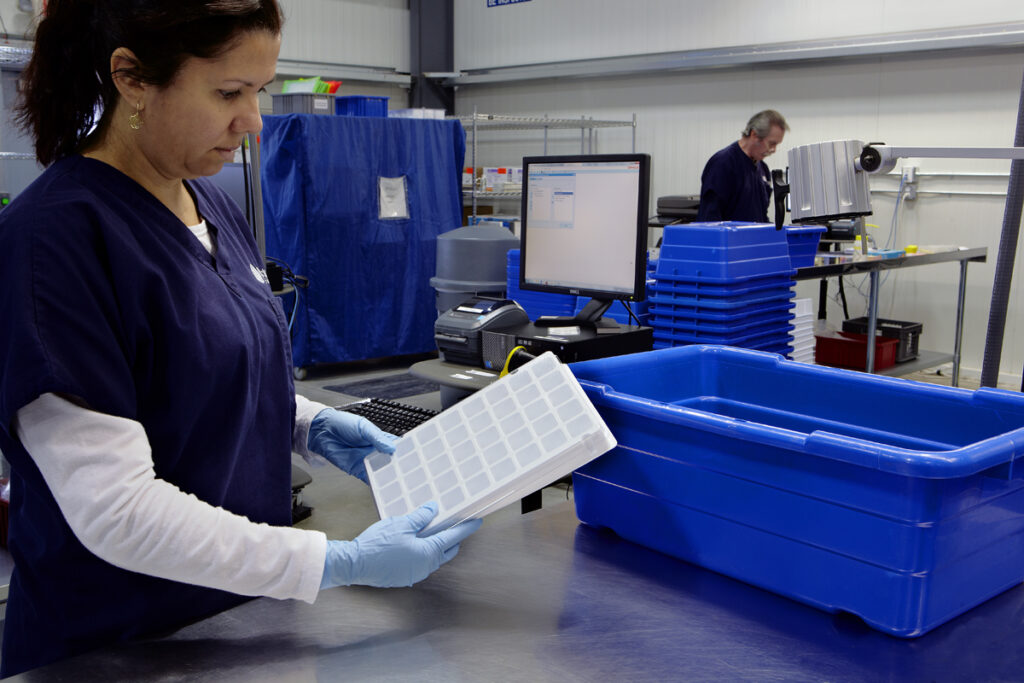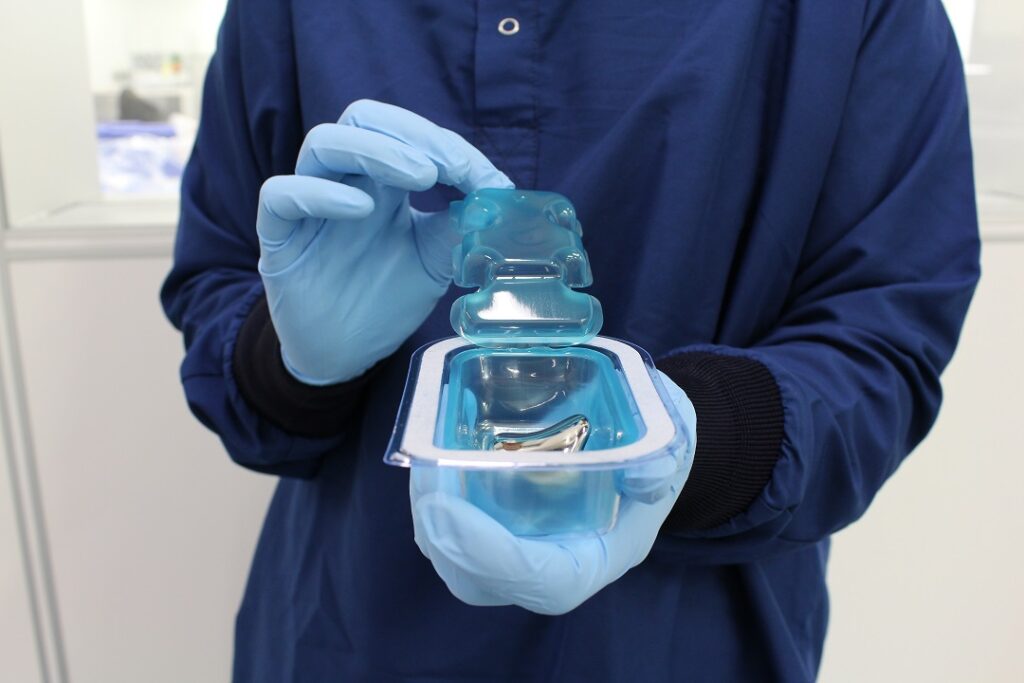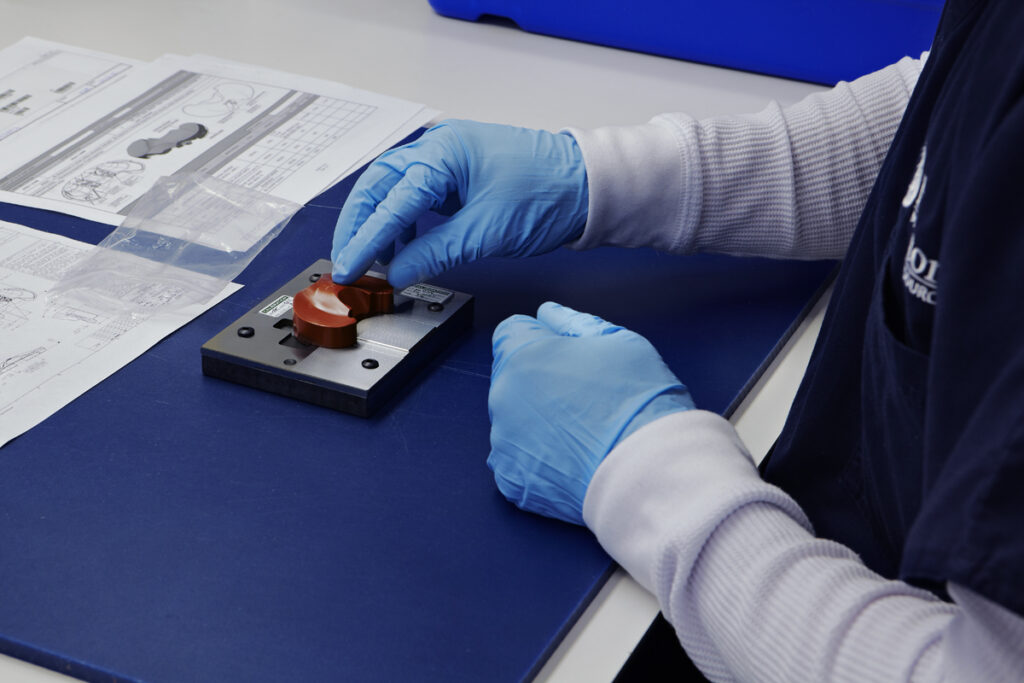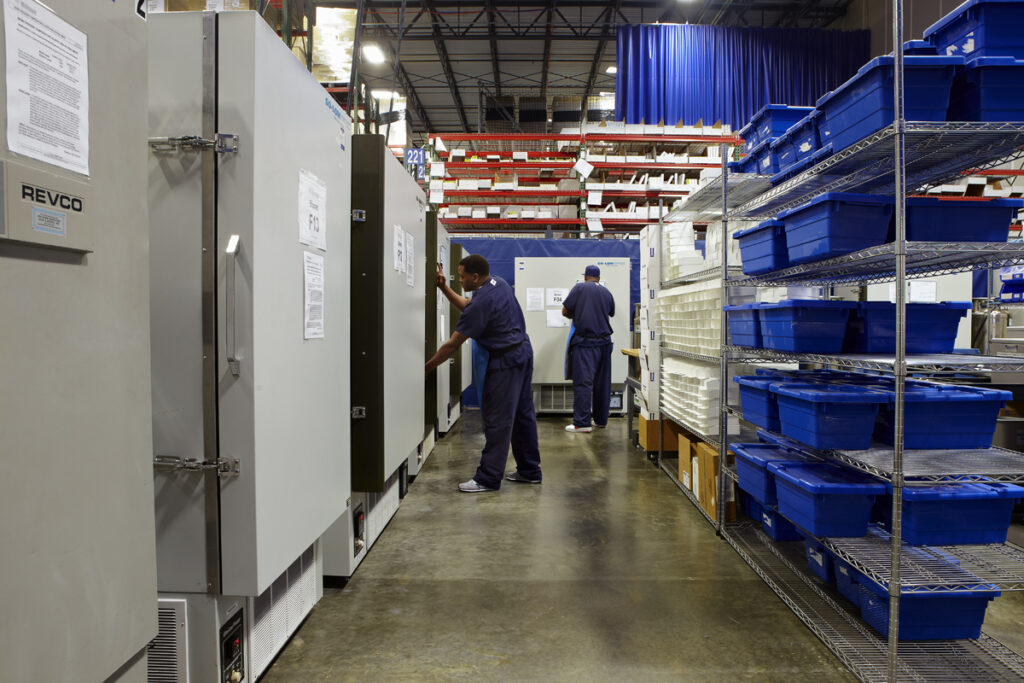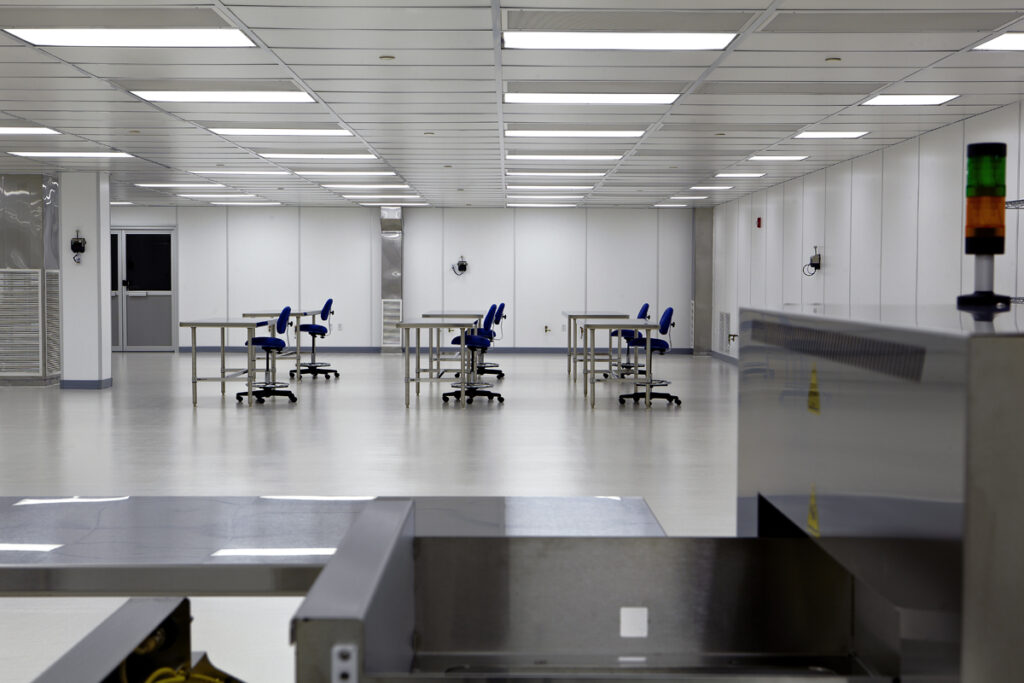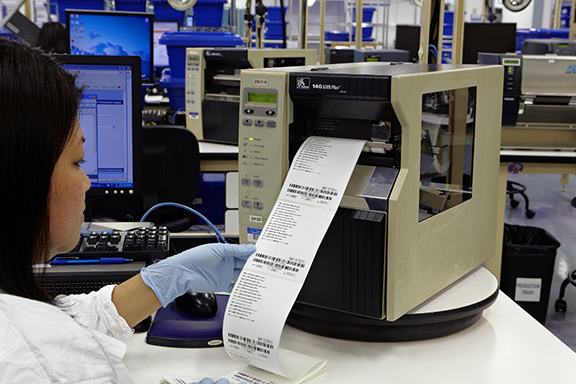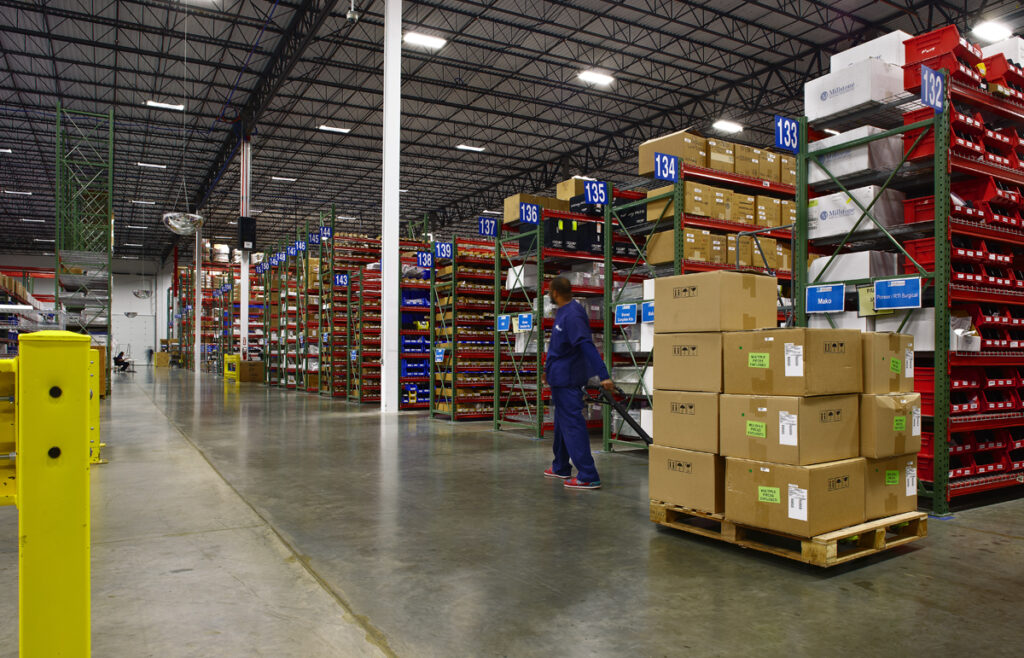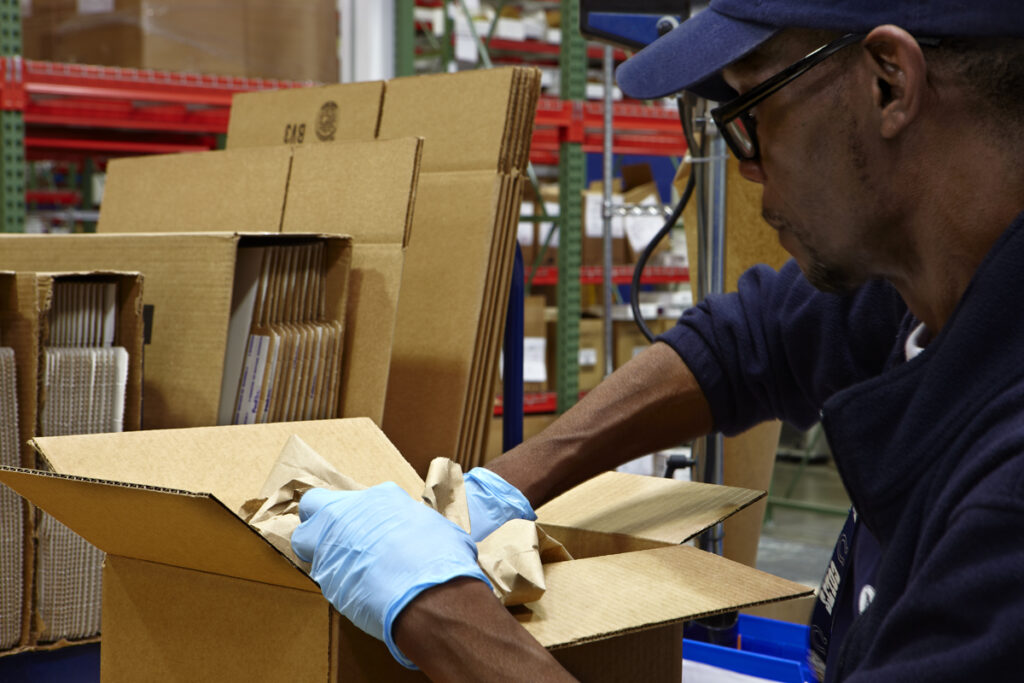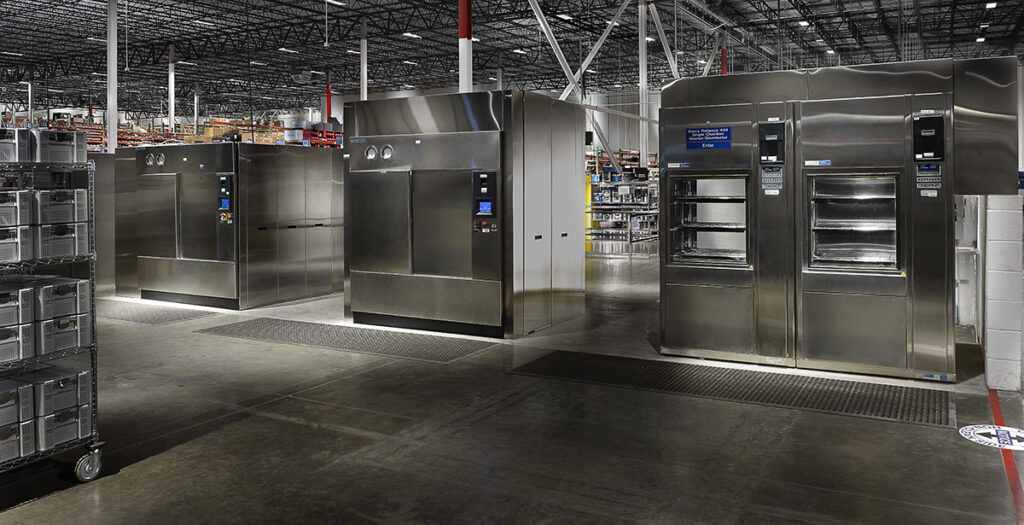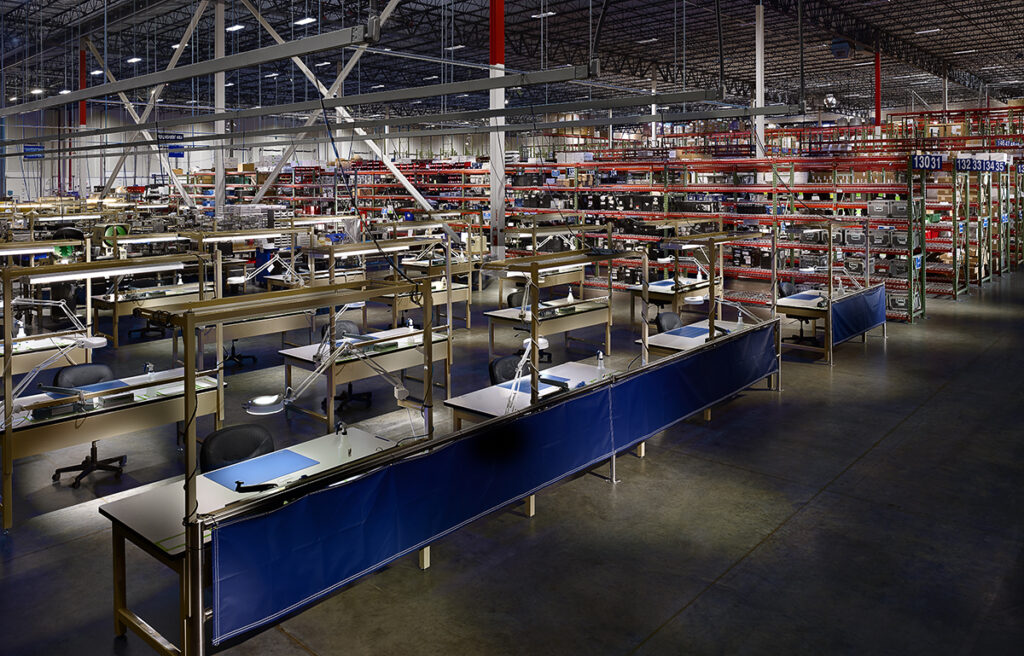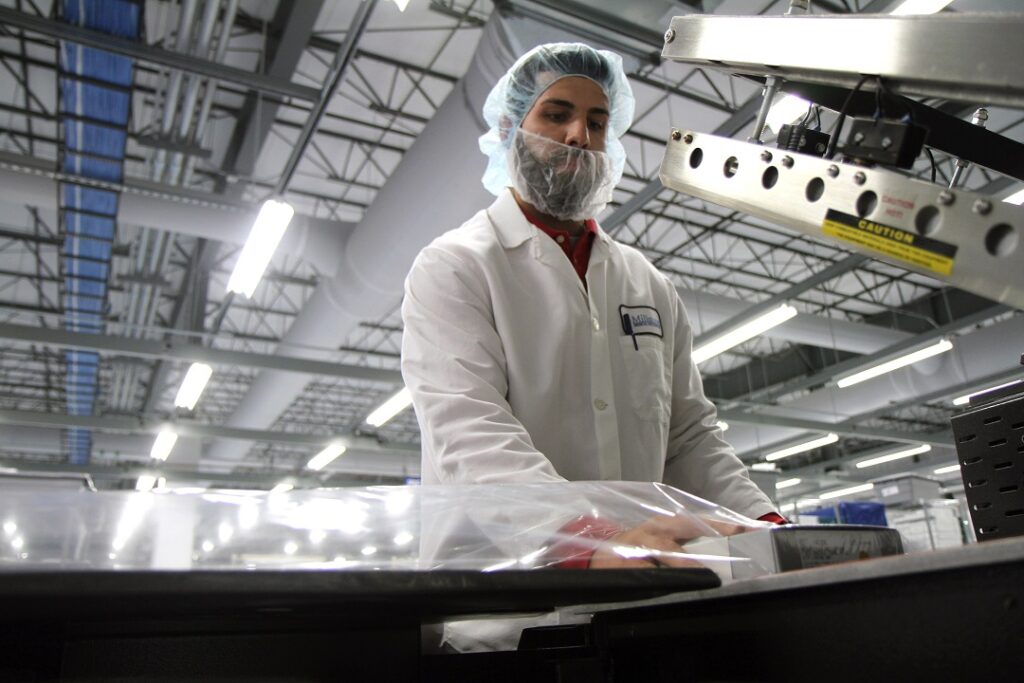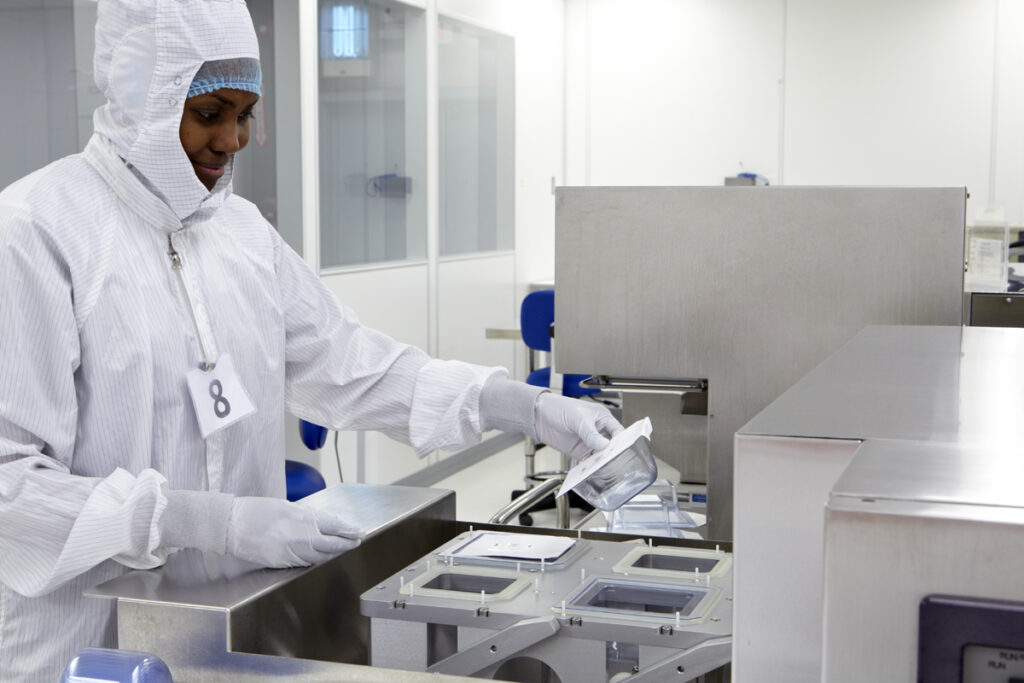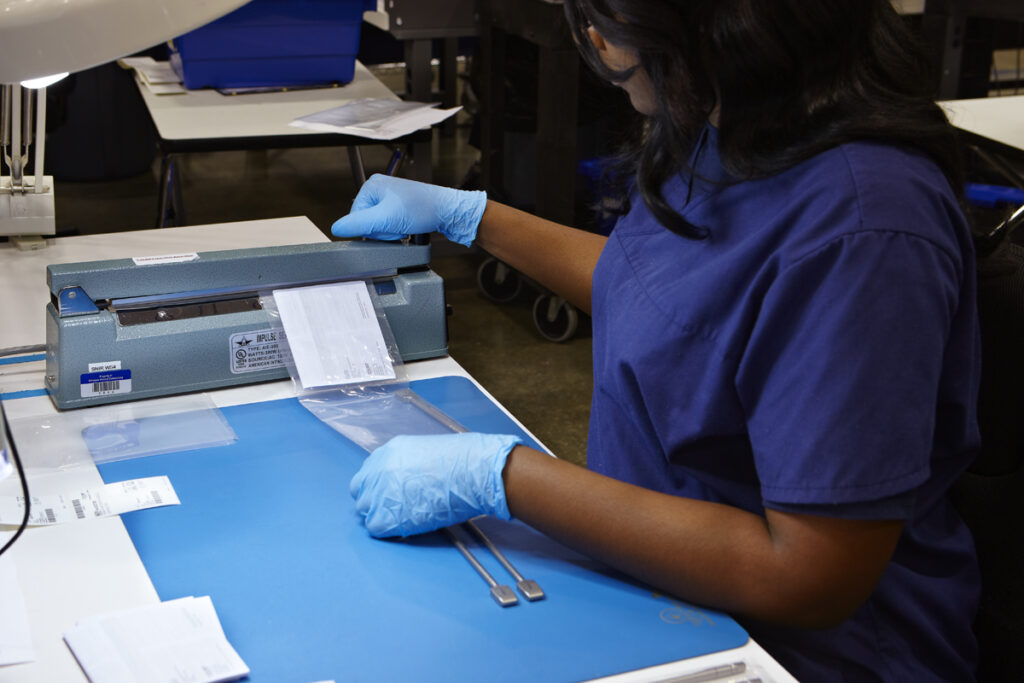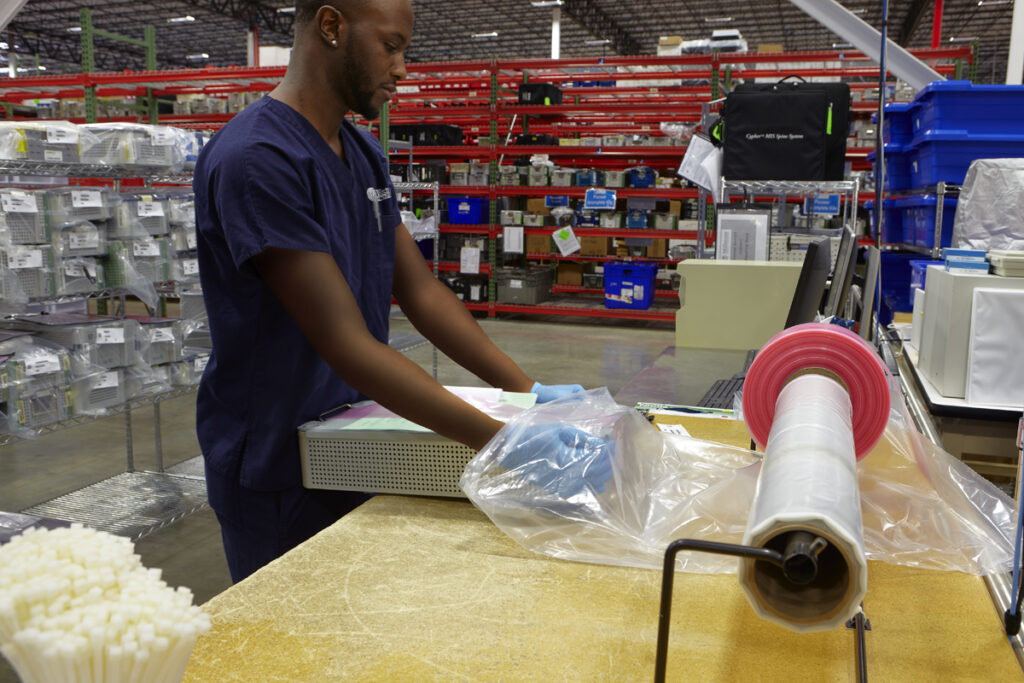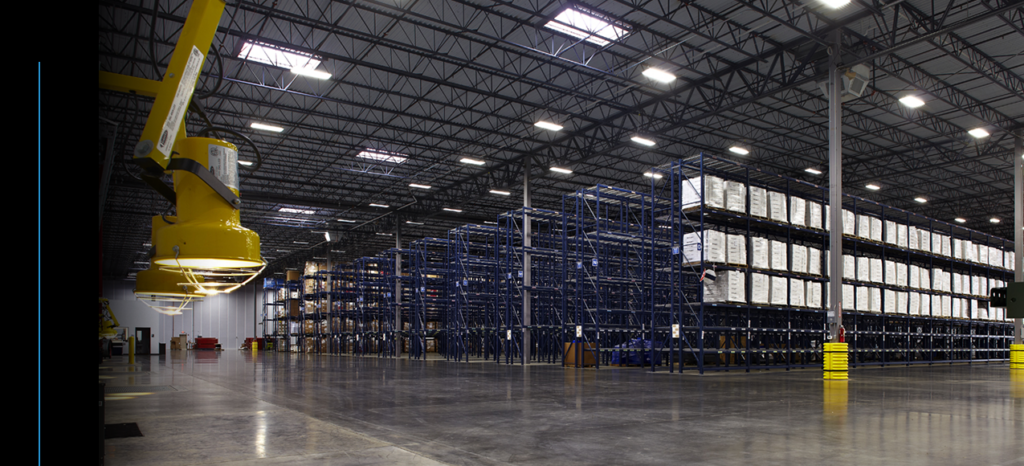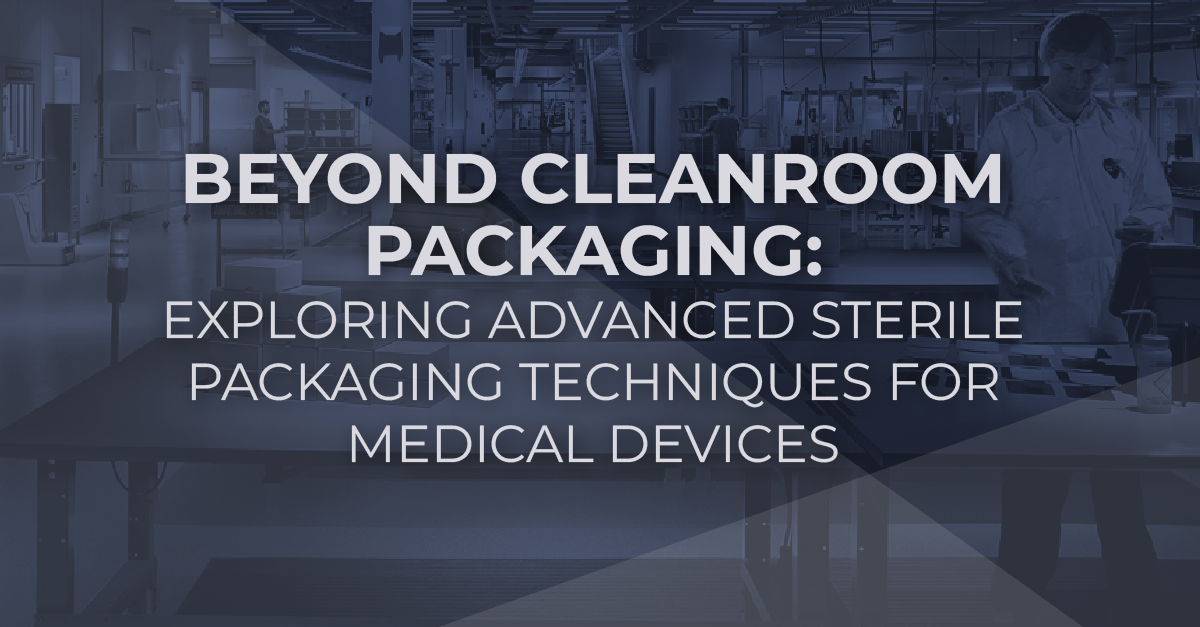
Exploring Advanced Sterile Packaging Techniques
Ensured sterility is essential for medical device manufacturers as it directly affects patient safety, product integrity, and regulatory compliance. While cleanroom packaging is vital for reducing contamination during the assembly and sealing processes, many medical devices require more advanced methods for achieving and maintaining sterile packaging. This article will examine four key sterile packaging techniques and guide OEMs in selecting the most suitable approach for their devices.
Methods of Environmental Monitoring: Water vs. Air Sampling
Aseptic manufacturing: what is it? A number of aseptic procedures carried out in a sterile setting make up aseptic production. By keeping germs out, an aseptic procedure avoids contamination. In order to prevent microbiological contamination, aseptic healthcare goods are manufactured and packaged in controlled settings. In order to prevent medical devices or products from becoming contaminated by microbiological material from technicians, raw materials, or machinery, an aseptic atmosphere is maintained by the use of specialized (often automated) equipment, water monitoring, and air sampling. The chain of infection can be broken by contamination risk mitigation measures including air and water…
Tackling Field Inventory Visibility: Reducing Risk and Costs through Advanced Tracking
Tackling Field Inventory Visibility: Reducing Risk and Costs through Advanced Tracking Key Takeaways Field Inventory Visibility is a Major Challenge: Medical devices and loaner kits are spread across hospitals, sales reps, and regional storage, making real-time tracking difficult and increasing the risk of lost or underutilized inventory. Compliance with UDI and Traceability Mandates is Critical: Regulatory bodies require precise tracking of medical devices, but manual processes and disconnected systems create compliance gaps and audit vulnerabilities. Inefficient Inventory Management Leads to High Costs: Excess inventory, inaccurate demand forecasting, and rushed shipments drive up operational expenses and tie up working…
How Sustainability in Sterile Packaging Drives Innovation, Compliance, and Efficiency
Key Takeaways Next-Generation Materials – Biodegradable and recyclable options are emerging but must meet strict sterility and durability standards. Waste Reduction Strategies – Optimized design and material efficiency reduce waste while ensuring protection and compliance. Eco-Friendly Sterilization Advances – New methods like e-beam and vaporized hydrogen peroxide offer sustainable alternatives to traditional sterilization. Navigating Regulatory Challenges – Sustainable packaging must balance environmental goals with ISO and FDA compliance. Data-Driven Sustainability – Lifecycle Analysis (LCA) and sustainability reporting help manufacturers assess impact and improve packaging choices. Sustainability as a Strategic Imperative Sustainable sterile packaging is no longer just an…
How to Validate Sterilization for Products Sterilized by Radiation
How to Validate Sterilization for Products Sterilized by Radiation What does “sterile” mean according to the US Food and Drug Administration (FDA)? According to the most stringent definition, a product or object is considered sterile if all living microorganisms—including bacteria, yeasts, viruses, and molds—are completely absent. Sterile is defined for regulatory reasons using acceptance criteria that are derived from the estimated chance of contamination. For the majority of items, the likelihood of one contaminated product out of a million made products is an acceptable amount of contamination risk. However, depending on the medical equipment or product’s intended purpose,…
Methods for Measuring Ethylene Oxide Residuals via Extensive Extraction
Methods for Measuring Ethylene Oxide Residuals via Extensive Extraction EtO gas and EtO sterilization: what are they? The chemical gas ethylene oxide, sometimes known as EO or EtO, is frequently used to sterilize medical equipment and supplies. ethylene oxide is powerful and deeply penetrating alkylating agent. Because of these qualities, it works incredibly well as a sterilizer in humid and vacuumed environments. In actuality, ethylene oxide is used annually to sterilize about 20 billion medical items. Therefore, approximately 50% of sterilized medical supplies in the US are ethylene oxide sterilized. But ethylene oxide can potentially cause cancer at certain concentrations.…
Why Proactive Risk Management is Critical in Medical Device Packaging
Why Proactive Risk Management is Critical in Medical Device Packaging Key Takeaways Common Packaging Risks – Early identification of material incompatibility, sterilization failures, and regulatory non-compliance prevents costly delays. Early Integration Benefits – Proactively assessing risks in packaging design streamlines validation and accelerates market readiness. Validation Strategies for Compliance – Implementing FMEA, environmental testing, and seal integrity assessments ensures sterility and regulatory approval. Millstone’s Collaborative Approach – Partnering with original equipment manufacturers (OEMs) to optimize packaging, mitigate risks, and enhance testing efficiency. Medical device packaging ensures product sterility, integrity, and compliance throughout its lifecycle. Yet, many OEMs treat packaging as…
Optimizing Medical Device Inventory with Dynamic Models
The High Cost of Inefficient Inventory Management In the medical device industry, inventory inefficiencies create significant challenges that affect costs, product availability, and patient outcomes. Traditional inventory management strategies often require keeping large stockpiles of products to address unpredictable demand. However, this approach can tie up working capital, increase storage costs, and struggle to adapt to real-time market needs. Static inventory models depend heavily on historical data, which limits their effectiveness in addressing fluctuations caused by supply chain disruptions, seasonal demand changes, and logistical delays. As a result, medical device manufacturers frequently face challenges such as excess inventory that…
What Is the Price of Developing Medical Devices?
What are medical devices? Numerous nonpharmaceutical products used for illness treatment, monitoring, or prevention are categorized as medical devices. For instance, the concept of a medical device includes mechanical devices, combination devices, and medical instruments (electronics). Certain combination devices contain biological, pharmacological, or chemical ingredients. Medical devices also include surgical instruments, implanted devices, and non-implantable gadgets that patients use at home. Given the abundance of medical devices available on the market, their significance for hospitals and the healthcare sector as a whole cannot be overstated. Medical device definition, benefits of medical device development companies, medical device development procedures, medical…
Optimizing Sterilization Strategy for Medical Device Packaging
Key Takeaways Packaging and sterilization must be aligned to ensure sterility, compliance, and product integrity. Prevalidated sterile barrier packaging reduces validation delays and accelerates time-to-market. Material compatibility testing is essential when transitioning to new sterilization methods. Sterilization disruptions can impact packaging workflows, making contingency planning critical. The Critical Link Between Packaging and Sterilization Sterile medical device packaging isn’t just about protection—it’s about ensuring the product remains sterile, intact, and ready for patient use throughout its lifecycle. However, many OEMs overlook how sterilization methods impact packaging material selection, leading to costly revalidations, compliance setbacks, and supply chain bottlenecks. Sterilization capacity constraints,…
Streamline Medical Device Operations with Integrated Loaner Kit Management
Streamline Medical Device Operations with Integrated Loaner Kit Management Key Takeaways Loaner Kit Sterilization Compliance: Strict adherence to safety and sterilization standards is vital for ensuring patient safety and meeting regulatory demands. Loaner Kit Supply Chain Challenges: Traditional, non-integrated supply chains complicate loaner kit management, increasing risks and inefficiencies. Integrated Tier 1 Loaner Kit Solutions: Leveraging Tier 1 services like Millstone Medical Outsourcing optimizes the entire loaner kit lifecycle, enhancing operational efficiency and compliance. The Hidden Risks of Loaner Kit Management in Medical Devices Loaner kits are crucial for medical devices, particularly during surgeries and other vital procedures. These kits…
Which Sterilization Technique Is Best for Your Medical Device?
Which Sterilization Technique Is Best for Your Medical Device? Sterilization: What is it? Any procedure that eliminates, destroys, or deactivates all life is called sterilization. The word “sterile,” which denotes the total absence of live germs with the capacity to proliferate, is associated with sterilization. Any bacteria found in items obtained during manufacture are eliminated by sterilization procedures. Sterilized products are frequently thermally or chemically sterilized after being put into their final packaging containers. We’ll go over the various sterilization techniques in this post, including ethylene oxide sterilization techniques, dry heat sterilization techniques, moist heat sterilization techniques, and which…
Reducing Medical Device Complexity: How Tier 1 Services Simplify Packaging & Assembly
Reducing Medical Device Complexity: How Tier 1 Services Simplify Packaging & Assembly Key Takeaways A Tier 1 partner consolidates sourcing, assembly, and packaging, eliminating inefficiencies caused by multiple vendors. Prevalidated packaging solutions reduce regulatory risks and speed up time-to-market. Integrated sourcing ensures material compatibility, preventing sterility failures and packaging bottlenecks. Cleanroom-based assembly and kitting streamline production, improving consistency and compliance. The Hidden Challenges in Complex Medical Device Assembly & Packaging Medical device manufacturers (OEMs) face unprecedented complexity in managing assembly and packaging workflows. Multi-component devices require precise kitting, sterile barrier integrity, and rigorous regulatory compliance while maintaining production efficiency. Traditionally,…
Enhancing Medical Device Supply Chain Efficiency with Tier 1 Service Providers
Enhancing Medical Device Supply Chain Efficiency with Tier 1 Service Providers Key Takeaways Enhanced Supplier Validation: Implementing strategic backup suppliers mitigates risks associated with market volatility and supplier failures, ensuring continuous production. Automated Performance Monitoring: Utilizing AI-driven systems allows for real-time monitoring of suppliers, improving compliance and operational efficiency. Supplier Management Advantages: Adopting dual-sourcing strategies reduces risks associated with reliance on a single supplier and strengthens supply chain resilience. Proactive Risk Management: Customized risk assessment models help predict and lessen potential disruptions, stabilizing supply chain operations in uncertain markets. Due to its dynamic nature and stringent regulations, supply chain…
Custom Kitting in Cleanroom Assembly: Packaging Strategies for Complex Medical Devices
Custom Kitting in Cleanroom Assembly: Packaging Strategies for Complex Medical Devices Key Takeaways Custom kitting streamlines complex medical device assembly and enhances surgical efficiency. Cleanroom environments ensure sterile, compliant kitting processes. Integrated kitting and packaging solutions reduce costs and improve supply chain performance. The Growing Role of Custom Kitting in Complex Medical Device Assembly Medical device assembly requires precision and efficiency, especially for complex, multi-component products. Custom kitting simplifies this process by organizing complex components into pre-packaged, ready-to-use kits. To ensure patient safety, these solutions must meet strict sterility and quality standards in cleanroom environments. This article discusses…
Navigating Regulatory Challenges in Medical Device Reverse Logistics
Navigating Regulatory Challenges in Medical Device Reverse Logistics Key Takeaways Strict adherence to regulatory standards guarantees the safety and functionality of reprocessed medical devices. Navigating FDA and EMA guidelines is essential for maintaining compliance and patient safety. Non-compliance poses significant financial penalties, operational disruptions, and risks to patient safety. Regular updates, training, and the integration of advanced technology are vital for efficient and compliant reverse logistics workflows. The Stringent Steps of Reverse Logistics Reverse logistics of medical devices is a crucial practice that extends the lifespan of equipment, lowers waste, and reduces operational costs. However, this process requires…
Important Distinctions Among USP 1115, USP 1116, and USP 1211
Important Distinctions Among USP 1115, USP 1116, and USP 1211 What is medical device and product environmental monitoring? The methods and instruments used to observe an environment, describe its quality, and make sure it satisfies predetermined acceptance standards are known as environmental monitoring. Environmental monitoring for medical devices and products includes acceptability requirements for the environment at every stage of the product’s lifecycle, from raw materials to expiration or end-use. One crucial parameter for quality control is environmental monitoring. Verifying that your product or medical device is free of microorganisms and that the environment during the various stages…
Beyond Cleanroom Packaging: Exploring Advanced Sterile Packaging Techniques for Medical Devices
Beyond Cleanroom Packaging: Exploring Advanced Sterile Packaging Techniques for Medical Devices Key Takeaways Sterile packaging encompasses techniques beyond cleanroom environments, including terminal sterilization, aseptic packaging, and prevalidated sterile barrier systems. Each method offers unique advantages based on the type of device, material compatibility, and regulatory requirements. A strategic approach to sterile packaging improves compliance, enhances efficiency, and ensures reliability in the supply chain. Sterile Packaging: Beyond the Cleanroom Ensured sterility is essential for medical device manufacturers as it directly affects patient safety, product integrity, and regulatory compliance. While cleanroom packaging is vital for reducing contamination during the assembly…
The Strategic Advantages of Reverse Reprocessing for Medical Devices
The Strategic Advantages of Reverse Reprocessing for Medical Devices Key Takeaways Reverse reprocessing helps extend the lifecycle of medical devices, leading to less waste and reduced costs for Original Equipment Manufacturers (OEMs). Adherence to FDA and EU Medical Device Regulation (MDR) guidelines is essential to ensure the safety and effectiveness of reprocessed devices. An optimized reverse reprocessing strategy enhances supply chain efficiency while preserving product integrity. Revolutionizing Medical Device Reprocessing for a More Sustainable Industry The medical device industry faces increasing pressure to balance cost efficiency, ensure environmental responsibility, and comply with regulations. As the demand for high-performance,…
Optimizing Medical Device Logistics: Reducing Lead Times While Maintaining Quality
Optimizing Medical Device Logistics: Reducing Lead Times While Maintaining Quality Key Takeaways: Hidden bottlenecks in medical device distribution can lead to delays and higher costs. Integrating packaging and distribution simplifies workflows and shortens lead times. Strategic placement of warehouses enhances shipping speed and ensures regulatory compliance. The Importance of Faster Logistics in Medical Device Distribution In the highly regulated world of medical device manufacturing, time is of the essence. Original Equipment Manufacturers (OEMs) must navigate strict compliance requirements while ensuring products reach the market quickly and safely. However, logistical bottlenecks—such as fragmented distribution networks, inefficient packaging workflows, and…
Accelerating Time-to-Market with Integrated Medical Device Packaging
Accelerating Time-to-Market with Integrated Medical Device Packaging Key Takeaways Designing packaging early in the process expedites regulatory approval and commercialization. Conducting packaging validation and associated testing in-house eliminates delays caused by third-party services, ensuring faster product launches. Integrated packaging and logistics solutions simplify distribution, effectively reducing lead times. The Importance of Time-to-Market in Medical Device Packaging Bringing a medical device to market is a highly regulated and time-sensitive process. Delays can result in significant financial losses and limit patient access to life-saving technologies. Every stage of this process requires careful management, from design and validation to regulatory approvals…
Why Packaging Validation is Critical for Cardiovascular Device Compliance
Why Packaging Validation is Critical for Cardiovascular Device Compliance Key Takeaways: Packaging validation is crucial for ensuring regulatory compliance and maintaining product integrity. Thorough testing guarantees that packaging can withstand real-world conditions. Conducting validation processes in-house enhances speed, accuracy, and cost efficiency. Ensuring Quality and Compliance in Cardiovascular Device Packaging Precision is vital for cardiovascular device manufacturers. Maintaining stringent regulatory packaging validation is essential for maintaining FDA and EU MDR regulations through stringent package and market readiness. Failure to meticulously validate can result in delayed product launches, costly penalties, and compromised device integrity, jeopardizing patient well-being and market…
Navigating Regulatory Complexities in Cardiovascular Device Logistics
Navigating Regulatory Complexities in Cardiovascular Device Logistics Key Takeaways: Learn how global regulatory challenges can impact cardiovascular device logistics and impact time-to-market. Discover how precise documentation, real-time tracking, and compliance integration streamline distribution processes. Explore how Millstone’s logistics expertise ensures smooth delivery while meeting strict global standards. The Risks of Regulatory Complexities in Cardiovascular Device Logistics In the logistics of cardiovascular devices, regulations extend beyond just manufacturing, assembly, testing, and packaging; they influence every aspect of the distribution process. With strict requirements from regulatory bodies like the FDA, ISO, and EU MDR, even the slightest misstep can lead…
Simplifying the Complexities of Cardiovascular Device Packaging
Simplifying the Complexities of Cardiovascular Device Packaging Key Takeaways Cardiovascular devices require customized assembly and packaging solutions due to their varying shapes, sizes, and delicate components. Integrating assembly and packaging design early in product development helps ensure regulatory compliance, reduces costs, and minimizes risks. Complex assembly and packaging strategies streamline operations, reduce delays, and enhance patient safety. The assembly and packaging of cardiovascular medical devices is vital and directly affects product integrity, regulatory compliance, and patient safety. These devices range from intricate stents and pacemakers to more significant components like heart pumps, each demanding unique packaging solutions due to…
Navigating Speed-to-Market Risks in Cardiovascular Logistics
Navigating Speed-to-Market Risks in Cardiovascular Logistics Key Takeaways Fragmented logistics create inefficiencies, leading to delays, miscommunication, and increased costs. Supply chain disruptions, from material shortages to regulatory challenges, threaten operational continuity. Limited distribution capacity restricts market access, delays launches, and drives up costs. Integrated logistics strategies can mitigate risks and ensure faster time-to-market without compromising quality or compliance. In the fast-paced world of medical devices, every moment matters—not just for business growth but for saving lives. Speeding up the time it takes to bring products to market is so important for providing innovative, life-saving solutions to patients while…
Determining Ethylene Oxide Sterilization Allowable Limits
Determining Ethylene Oxide Sterilization Allowable Limits What is Sterilization using Ethylene Oxide? The gas ethylene oxide, sometimes referred to as EO or EtO, is frequently used to chemically sterilize medical equipment and supplies. Ethylene oxide is a powerful and deeply penetrating alkylating agent. It is a very effective sterilizing agent because of these qualities. But ethylene oxide can potentially cause cancer at certain concentrations. Microorganisms are killed by ethylene oxide sterilization, which involves exposing them to ethylene oxide gas in a vacuum and humidity. EtO can be utilized alone or in conjunction with carbon dioxide. Ethylene Oxide (EtO)…
The Power of An Expert Partnership in Devices for Robotic-Assisted Surgeries
The Power of An Expert Partnership in Devices for Robotic-Assisted Surgeries Key Takeaways: Ensure device integrity with a packaging partner specializing in sterility, integrity, and rigorous testing to meet regulatory compliance standards. A partner for in-process testing can improve cost efficiency and reduce lead times, enabling quicker turnaround and faster time-to-market. Expanded facilities and scalable services offered by a partner can help OEMs meet spikes in demand quickly and without compromising quality. Use a partner to help establish customized assemblies that simplify complex tasks, reduce lead times, and ensure that each device is ideally suited for its…
Understanding Reverse Logistics as a Key to Business Success
Understanding Reverse Logistics as a Key to Business Success Key Takeaways Implementing reverse logistics helps OEMs reclaim and redistribute inventory, reducing manufacturing costs and maximizing the value of existing products. Reverse logistics strengthens supply chain resilience by redeploying reclaimed inventory to meet market demands, mitigating disruptions. Adopting reverse logistics practices supports recycling and reuse, aligning with corporate social responsibility and environmental sustainability goals. Partnering with experts ensures access to cutting-edge tracking, processing, and quality control technologies, improving efficiency and compliance. Expert partners offer scalable solutions to manage inventory spikes and market fluctuations, ensuring continuous quality and responsiveness. Original…
Industry Q&A: Six Questions on Supply Chain & Tier 1 Service
Industry Q&A: Six Questions on Supply Chain & Tier 1 Service More than 18 months into the post-COVID era, medtech OEMs continue to face new challenges of complexity, especially in the orthopedic market. With changes to elective surgery delivery models, persistent supply chain disruptions, labor shortages, and more, the nature of the market looks to be disruptive for some time to come. As we look to 2022, Millstone is sharing industry perspectives on market trends and must-knows from some of our experts. Millstone’s Marketing Manager Brittany Arnone recently talked with General Manager Tom Williams about what to expect…
Leveraging Expertise In Steam Sterilization Validation for Reusable Orthopedic Devices
Leveraging Expertise In Steam Sterilization Validation for Reusable Orthopedic Devices These days, the business of orthopedics requires some gymnastics. Balancing ever-evolving regulatory compliance needs with continuity concerns can challenge even the world’s biggest, most successful firms. As technologies and markets diverge and diversify, staying ahead of competitors and on top of lead times is hard. Missteps and hiccups can lead to delays – and break promises to patients. Even small changes introduce complexity. Changing product design introduces risk, which can lead to test failure, increased costs, and prolonged lead times. It’s time, in the end, that matters here.…
How Comprehensive Product Testing Expertise Reduces Risk for Medtech Manufacturers
How Comprehensive Product Testing Expertise Reduces Risk for Medtech Manufacturers When the lifesaving and lifechanging products you make are going into patients’ bodies, there is no room for error. Every medical device manufacturer knows this truth. So do regulatory bodies. Taken together, the focus on patient safety and compliance are the driving forces behind comprehensive product, packaging, and environmental testing. Against this backdrop, medical device and medtech manufacturers are increasingly turning to outsourcing like contract manufacturing and contract testing. This shift has advantages, including reduced facility footprint and access to specialty expertise with lower capital investment. Outsourcing also…
Five Reasons Why Supply Chain Visibility Matters in Medical Device Manufacturing
Five Reasons Why Supply Chain Visibility Matters in Medical Device Manufacturing You’ve heard the saying “what you don’t know can’t hurt you.” While it might be the case for feelings, what you don’t know or don’t see will definitely hurt your supply chain—and, by extension, everything about your business. Without good visibility into your complex, interconnected supply chain, risk increases, from ensuring regulatory compliance to managing lead times to meet customer demand. In addition, lack of visibility hampers a business’s ability to respond quickly to disruption. Given all that is in play in the medical device industry, it’s…
Identifying and Evaluating Alternative Sterilization Methods for Medical Devices
Identifying and Evaluating Alternative Sterilization Methods for Medical Devices Mark Twain once said, “Success is a journey, not a destination. It requires constant effort, vigilance, and reevaluation.” While he could not have imagined today’s medical device manufacturing industry, he certainly nailed the idea of what it takes to stay at the cutting edge of a constantly evolving and highly complex market. One of these leading edges is sterilization methods. In recent years, several new sterilization modalities have emerged—and more change is on the horizon. Medical device manufacturers will have to successfully navigate this changing landscape while balancing the priorities…
Accelerating Time to Market by Streamlining Medical Device Testing
Accelerating Time to Market by Streamlining Medical Device Testing One of the biggest challenges in medical device manufacturing is simply getting the product to market quickly. Speed to launch isn’t just about competitive advantage; it’s also about making a difference in patients’ lives. The sooner you can bring your device or product to market, the sooner it can help the people who truly need it. Accelerating time to market, though, can’t come at the cost of safety or quality. Product launches involve so much inherent complexity, with so many possibilities for costly delays and emergent problems, that it’s…
A Look Inside Managing Supply Chain Risk in the Medical Device Industry
A Look Inside Managing Supply Chain Risk in the Medical Device Industry While some of us in the medtech industry may dream of a day when “supply chain risk” is not top of mind, that day is not here yet. Ongoing supply chain disruption and continued global inflation are exerting continuing pressure on medical device manufacturers. So, it is definitely not the moment to let up on supply chain risk management. In this article, we look at the complex factors driving continued supply chain pressure through mid-2023, as well as how an expert strategic partner can help your…
Strengthening Your Sterilization Strategy to Minimize Disruptions
Strengthening Your Sterilization Strategy to Minimize Disruptions For four years now, medical device manufacturers have had to navigate significant and ongoing disruptions to device sterilization. Concerns over the harmful effects of ethylene oxide emissions shuttered facilities in late 2019. Suddenly, significantly reduced capacity upended production and sent OEMs scrambling for alternatives. Despite advances and alternatives, though, there are proposed regulatory challenges on the horizon—and the forecast calls for more turbulence ahead. As OEMs know only too well, changes in a highly regulated market are often anything but easy, as there are no simple substitutions or quick fixes. It…
Four Advantages of Centralizing Supply Chain Management
Four Advantages of Centralizing Supply Chain Management A Game-Changer for Medical Device Manufacturers Material shortages, shipping delays, forecasting difficulties, labor shortages, and regulatory compliance challenges. The supply chain disruptions and pressures of the last three years have certainly rattled medical device manufacturers and their partners. With lead times in some cases as long or longer than ever before, many OEMs have prioritized key supply chain shifts to protect productivity. These include strategies to build a more resilient supply chain, including diversification of the supplier base, localization and nearshoring, and increased business continuity and risk planning. Many OEMs, though,…
The Benefits of Outsourcing Medical Device Product Testing
The Benefits of Outsourcing Medical Device Product Testing As a medical device manufacturer, you know that every product you bring to market must meet rigorous testing standards to ensure patient safety. Product and packaging testing can be time-consuming, though, and require specialized knowledge, equipment, and resources. With increased regulatory and product complexity, it can be challenging to keep up with all the necessary testing requirements in house. This is where outsourced product testing can benefit medical device manufacturers, allowing them to streamline development and bring safe, effective products to market faster. In this article, we explore the benefits…
Implementing the Three Cs for a More Efficient Supply Chain
Implementing the Three Cs for a More Efficient Supply Chain In today’s dynamic and disrupted orthopedic market, the adage ‘time is money’ couldn’t ring truer. As the industry races to keep pace with demand, every second counts—in product launches and for ongoing production. It’s not just the clock, however, that poses a challenge; it’s also the compounded supply chain complexity that can strain both timelines and financial resources. As a result, many orthopedic manufacturers have focused heavily on bolstering production capacity, but this approach can come up short. True supply chain success requires taking a strategic approach built…
The Three C’s of Supply Chain Success
The Three C’s of Supply Chain Success Like our human bodies, the medtech supply chain needs predictable, uninterrupted inflow of materials and steady-state internal processes to function—with the end result the production of lifesaving products on a regular schedule. It’s an ideal scenario, but the challenges and interruptions of the last few years have made it difficult to attain. From the shortage of raw materials and skilled labor to the disruptions caused by natural disasters and political tensions, medtech firms must navigate new complexities and an unpredictable landscape—and even then, might not have access to a steady supply…
Millstone Announces Launch of Millstone Testing Services
Millstone Announces Launch of Millstone Testing Services Millstone Medical Outsourcing is excited to announce the launch of Millstone Testing Services, its new division offering a comprehensive range of product, packaging, and environmental testing for the medical device and pharmaceutical industries. On November 14, Millstone acquired two leading testing organizations, MycoScience and Ethide Laboratories. This exciting acquisition brings together 90 years of experience in regulatory testing services for the medical device and pharmaceutical industries. With Millstone Testing Services, customers now have the option of having Millstone complete a broad range of adjacent testing in-house, with better controls around product…
Industry Q&A: Six Questions on Quality Critical Inspection
Industry Q&A: Six Questions on Quality Critical Inspection Quality: it’s essential to ensuring that the products that bear your name live up to it. Even more importantly, when you’re in medical manufacturing, quality is about upholding patient safety—and delivering on your promise to the patient. This is why everything we do at Millstone is focused on quality, from our commitment to operating under the highest quality standards to our best-in-class systems and processes. As part of our series sharing industry perspectives, Millstone’s Marketing Manager Brittany Arnone recently caught up with Victoria Hughes, Vice President, Quality & Regulatory, to…
Industry Q&A: Solving Supply Chain Pressures with Reverse Logistics
Industry Q&A: Solving Supply Chain Pressures with Reverse Logistics We’re living through the Great Supply Chain Reckoning as orthopedics firms grapple with material availability, shortages, and shipping delays worldwide. For OEMs of all sizes, disruption continues to dominate the outlook through the end of 2021 and well into next year. As we look to 2022, Millstone is sharing industry perspectives on market trends and must-knows from some of our experts. Millstone’s Marketing Manager Brittany Arnone recently talked with Commercial President Kelly Lucenti about how reverse logistics can help OEMs of all sizes address the challenges and uncertainty of…
Industry Q&A: Five Questions on 2022 Trends and System Integration Services
Industry Q&A: Five Questions on 2022 Trends and System Integration Services In the perpetual quest for increased efficiency, visibility, and business performance, medtech OEMs are turning to better tools to help them master today’s market. This is especially important given the market’s rapid changes. As we look to 2022, Millstone is sharing industry perspectives on market trends and must-knows from some of our experts. Millstone’s Marketing Manager Brittany Arnone recently talked with Khrishna Mangal, Chief Digital and Information Officer, about what he’s watching as we approach the new year. Khrishna also shared how Millstone’s expertise makes system integration…
Building Resiliency for the Next Big Supply Chain Interruption
Building Resiliency for the Next Big Supply Chain Interruption Supply chain resilience continues to be the headline story of 2021, in the orthopedic medical device industry as well as across industries. As we look to the post-COVID period, what has the orthopedic industry learned about managing complexity, forecasting, sourcing, risk, and supply chain resiliency? This is a key question, as supply chain disruption is certainly not behind us. After all, while COVID created challenges, other threats loom, including natural disasters, macroeconomic changes, shifts in regulation, and counterparty issues like material shortages and supplier planning, according to research…
Industry Q&A: Common Pitfalls of Orthopedic Robotic Assisted Surgery Product Launches
Industry Q&A: Common Pitfalls of Orthopedic Robotic Assisted Surgery Product Launches Robotic assisted surgery products were already on the ascent in the orthopedic space well before COVID-19, but the pandemic may just prove to be a booster for their continued adoption and growth. Stryker’s acquisition of Mako Surgical in 2013 paved the way for it to capture significant market share, and other top-five orthopedic OEMs soon answered with development of their own robotic surgery platforms. With a shift in some procedures toward outpatient and growing notice from orthopedic surgeons, an “arm’s race” for robotic surgery was…
Four Key Strategies to Advance Supply Chain Visibility and Resilience
Four Key Strategies to Advance Supply Chain Visibility and Resilience What’s keeping large global orthopedic manufacturers and suppliers up at night? Supply chain visibility and resilience. This isn’t a surprise, as the supply chain reckoning and global shocks of the last year have revealed true vulnerability in supply bases worldwide. Nearly 18 months after the first supply chain disruptions, many industries are still operating in great uncertainty. In fact, according to research by Gartner, just 21% of supply chain managers are operating a highly resilient supply chain today, with visibility and sourcing agility. Why? Of course, a lot…
Three Reasons Reverse Logistics is Mission-critical for OEMs
Three Reasons Reverse Logistics is Mission-critical for OEMs Over the last year, we’ve confronted a new reality in a world that changed rapidly, sometimes daily, for the medtech industry. Supply chain disruption unfolded across the globe early, with widespread ramifications for materials, labor and production. According to recent research by EY, two-thirds of medtech companies experienced revenue loss, with an average revenue decline of 5% across the medtech industry. This decline was higher for companies focused on elective procedures, as the pandemic strained healthcare systems or patients chose to delay surgeries during case surges or until after vaccination. While Wall…
Confronting the New Post-COVID Complexities of the Orthopedics Industry
Confronting the New Post-COVID Complexities of the Orthopedics Industry The orthopedic industry is highly complex and fiercely competitive, which puts significant pressure on OEMs. A rapidly evolving market, complex and highly regulated processes, sourcing and procurement challenges, and difficulty balancing supply and demand can make overall orthopedic complexity more than the sum of its parts. Yet this level of complexity was the norm before the developments (and difficulties) of the last year exerted themselves on the market. After all, the height of a global public health crisis wasn’t an opportune time for many patients to have elective surgeries. As a…
The Link Between Quality, Distribution, and Growth for Pharma Devices
The Link Between Quality, Distribution, and Growth for Pharma Devices Poised on the brink of Q2, we’re seeing signs of hope ahead. This is good news, as the last year has been difficult for everyone. Undeniably, it’s been a year of reckoning for the medtech industry. Pharmaceutical device manufacturers (and other medtech OEMs) are still facing disruption, complexities, and ongoing pressures. The second half of 2021, though, may offer relief, according to a recent report by JP Morgan analysts. Rising procedure volumes from pent-up demand, the growing market for telemedicine, and general recovery in the medtech industry could drive organic…
How to Shift from Reactive to Proactive Mode in Pharma Device Distribution
How to Shift from Reactive to Proactive Mode in Pharma Device Distribution If you work in pharmaceutical device manufacturing—or in almost any medical manufacturing—you already know how disrupted a time we find ourselves in. We’re in the midst of an unprecedented period of upheaval as OEMs look to build supply chain resilience, address competitive pressures, nurture innovation, and bring products to market more quickly and profitably. This is, of course, a tall order before you ever look ahead to anticipate change. Technological advancements and automation are changing everything from workflows to healthcare delivery, and businesses have to…
Facing the Biggest Risks of the Pharma Device Supply Chain
Facing the Biggest Risks of the Pharma Device Supply Chain If 2020 was the year of reckoning for medtech supply chains, 2021 will need to be the year of resilience. We recently delved into the vulnerabilities revealed in these supply chains, noting how a perfect storm created unprecedented pressure on firms to address resilience during and after recovery. The reality is that the strain on healthcare systems around the world will continue for some time, creating increased demand, changing inventory flow, and contributing to material shortages. Prioritizing supply chain resilience In this rapidly evolving and highly disrupted…
The Supply Chain Reckoning for the Med Device Industry
The Supply Chain Reckoning for the Med Device Industry An unprecedented year is coming to a close. Among many other things, it’s been the year of supply chain reckoning in the medtech industry. The first warnings came in February as shutdowns in China created pressure on sourcing, and the disruption only accelerated from there. As it did, it brought to light supply chain vulnerabilities in this industry (as well as in many others). Some have been temporary, as suppliers adjust to increased demand or emerged from shutdowns. Some relate to particular suppliers or materials that…
Managing Supply Chain Risk in Your COVID-19 Recovery
Managing Supply Chain Risk in Your COVID-19 Recovery As the pandemic has unfolded over the last eight months, it has brought to light supply chain vulnerabilities across industries. Some have been temporary as suppliers adjust to increased demand. Others have more wide-ranging consequences as they create disruption or significantly lengthen lead times. Of course, the type of product moving through the supply chain matters in risk management and recovery planning. For example, both canned corn and personal protective equipment (PPE) were in short supply in the early days of the pandemic. Only one of these two fulfills…
Maximize Case Coverage with Inventory Utilization
Maximize Case Coverage with Inventory Utilization This has been an unprecedented year in so many ways. While acknowledging the devastating loss of life in the pandemic and the economic and political turmoil that has ensued, we’re focusing this article on how the year has unfolded for medical device companies. In addition, we’ll look at how they can strengthen their COVID-19 recovery planning through the final quarter of 2020 and into early 2021. In mid-March, many hospitals shut down all elective procedures and surgeries, to prepare for spikes in COVID-19 cases and to reduce the potential transmission of the…
Open for Business – Millstone’s New Fall River, MA Facility Expansion
Open for Business – Millstone’s New Fall River, MA Facility Expansion Millstone Medical Outsourcing is pleased to announce the completion of construction on its new Fall River, Massachusetts facility expansion. The state-of-the-art building adds 60,000 square feet to Millstone’s Headquarter Campus, bringing the total to 120,000 square feet. Replacing an older, smaller building, the expansion increases the footprint dedicated to quality critical inspection and warehousing as well as adds expanded and upgraded office space and meeting rooms. More space for a growing business “This building prepares Millstone to meet the growth we know is coming,”…
Giving, Caring and Preparing During COVID-19
Giving, Caring and Preparing During COVID-19 For the last few weeks, as the COVID-19 emergency has unfolded nationwide, we at Millstone have sought ways to respond that can support and express solidarity for our colleagues in the medical industry. We have focused on the safety and wellbeing of our staff in Fall River, MA and Olive Branch, MS. We have found means to give where it will benefit the greater good. In this challenging time, we are also strategically preparing for the eventual reopening of our nation. Giving through donation Personal protective equipment (PPE) shortages nationwide…
Three Ways Outsourcing Benefits the Bottom Line While Reducing Risk
Three Ways Outsourcing Benefits the Bottom Line While Reducing Risk As the global market for medical product manufacturing grows, so does the market size for associated outsourcing services. While there are several influences at work, the main drivers for market growth are ever-increasing device complexity, the evolving regulatory oversight environment, and the intense competitive pressure on OEMs to get to market quickly, recoup product investments, and do so while upholding the highest levels of patient safety. In 2019, the market size for the global medical product outsourcing industry was estimated at $104.5 billion and is expected to grow…
Performing Continuous Risk Management for the Full Product Lifecycle
Performing Continuous Risk Management for the Full Product Lifecycle Risk assessment and management is an integral part of any successful medical device manufacturer’s strategy. Failure to do so can jeopardize your products’ effectiveness, reliability, quality, and safety. Yet unfortunately risk management is sometimes viewed through the single vantage point of fulfilling regulatory requirements rather than a broader strategic process woven through the business. Strategic risk management results in devices that are safe and effective, that undergo a more efficient design and development timeline to get to market faster, and that encounter fewer problems on the market. Performing…
Balancing Your Focus on Innovation with Your Legacy Production
Balancing Your Focus on Innovation with Your Legacy Production Over the last 18 to 24 months, a new wave of innovation has crested over the orthopedics market, and OEMs are actively bringing more new products to market. Innovation, of course, is essential to progress, especially in the medical device industry. The fiercely competitive nature of this market, coupled with the pressure to reduce costs as the healthcare system undergoes radical transformation, means medical device manufacturers must look to innovation for growth. In addition, medicine has always essentially been about innovation, as innovation offers the path to life-enhancing…
The Benefits of Being More Strategic in Instrument Set Building
The Benefits of Being More Strategic in Instrument Set Building During your most recent product launch, when did your team focus in on set building? Early on, sometime in the middle, or quite late in the planning process? Set building, of course, is the process of creating the instrument sets needed by surgeons to perform surgery. Many OEMs focus intensely on the inbound supply chain, manufacturing, sterilization, packaging, and distribution of their implants, because it is the implant itself that will drive sales. When it comes to building sets to support these sales, though, they can miss…
Four Benefits of Simplifying Nationwide Pharmaceutical Distribution
Four Benefits of Simplifying Nationwide Pharmaceutical Distribution Finished goods distribution, whether for medical devices or pharmaceutical products, can present significant administrative challenges. These can include the complexities of coordinating inbound supply, packaging, maintaining regulatory compliance, and getting finished goods where they are needed quickly and safely. Pharmaceutical product distribution, though, involves an extra layer of administration in the form of maintaining the licensing required to distribute within and across state lines. Reducing the administrative burden can free up capacity in operationally advantageous ways, from reducing the risk of non-compliance to focusing talent on high-growth areas. Millstone’s newest…
VAWD Accreditation for a Safer Supply Chain: A Closer Look
VAWD Accreditation for a Safer Supply Chain: A Closer Look With our strategic location in close proximity to one of the nation’s largest distribution hubs, our ability to provide expedited shipping, and our extended service hours, we can ensure that pharmaceutical products can reach any location in all 50 states on time, every time. At Millstone, we get it. We believe quality drives patient success. That’s why we’ve perfected all the capabilities medical device manufacturers need to get to market. Today we offer post-manufacturing and aftermarket services to more than 50 customers, including some of the top 10…
A Closer Look at State-of-the-Art Clean Room Packaging & Assembly
A Closer Look at State-of-the-Art Clean Room Packaging & Assembly In the medical device industry, it’s the topic on everyone’s minds, at all times. And for good reason: risk affects patients and outcomes, supply chain and productivity, manufacturers’ reputations, and companies’ bottom lines. Risk can take many forms, one of them being the risk inherent in designing and validating medical packaging that ensures devices get to—and into—patients safely. To address and manage this specific type of risk, it’s critical to establish and maintain superior quality systems. Meticulous attention to detail during the cleaning, sterilizing, and packaging processes…
Navigating Converting Your Product Lines to Sterile Packaging
Navigating Converting Your Product Lines to Sterile Packaging In spring 2017, the European Parliament approved and formally adopted the EU Medical Device Regulation (MDR). In brief, the MDR is a regulatory push to increase medical device safety in the EU market. It specifies that devices delivered in a sterile state should be designed, manufactured, and packaged with appropriate quality-controlled procedures, ensuring sterility when they are placed on the market. Many OEMs have been planning to convert their non-sterile product lines to sterile packaging in the time since the MDR was formally adopted. Although packaging is still considered…
Recall Processing: How to Contain Risks and Costs in Voluntary and Mandatory Recalls
Recall Processing: How to Contain Risks and Costs in Voluntary and Mandatory Recalls This topic is the one that no manufacturer ever wants to talk about. No OEM wants to be subject to a federally mandated recall or undertake a voluntary recall. Recalls of any kind are bad for patients, for reputations, for marketing, and for a business’s bottom line. Of course, patient safety and quality concerns win the day—as they should—and many manufacturers will face the realities of recall processing. Here is a closer look at the common reasons for recalls and the steps to handling…
Solving the Complexity of Package Validation for the High-Growth Firms
Solving the Complexity of Package Validation for the High-Growth Firms It’s a topic of continual interest to us, as well as to firms in the orthopedic device industry. This year alone, we’ve looked at it from several angles: from what drives orthopedic-specific complexity to how tier 1 services can effectively counter it and four key ways to fuel velocity by reducing complexity. The reason it’s so endlessly interesting is that complexity is a major villain in any business. Why? By ramping up the potential for error and amplifying inefficiency, complexity can escalate risk, cloud decision-making, and drive up cost. All of…
Boosting Velocity with Just In Time Supply Chain Management and Faster Inspection
Boosting Velocity with Just In Time Supply Chain Management and Faster Inspection In any business dependent on its supply chain, the goal is to deliver the products your customers need when they need them—as cost-effectively as possible. For many OEMs, especially in medical device manufacturing, that goal is elusive. Why? The answer comes down to two interconnected factors: unpredictability in your inbound supply chain and constrained internal resources and capacity. To see these two factors in action, consider this scenario. You know that certain products are needed immediately for an upcoming surgery. These products are given…
Optimizing Inventory Management with the ‘Circle of Life’ Approach
Optimizing Inventory Management with the ‘Circle of Life’ Approach Most medical device manufacturers are already great at shipping high volumes of inventory. By that, we mean assembling finished goods and pushing them out to the field. Shipping inventory out, though, is just one aspect of a strategic, full “circle of life” approach to inventory management—and the reality is that many OEMs are not nearly so adept at the other two aspects, loaner kit management and reverse logistics. Yet, meeting market demand with supply, having access to working capital, and ensuring growth and profitability are all only possible…
The Challenge and Risk of Continual Sourcing: Why Squeezing Your Supply Chain Can Cost You More
The Challenge and Risk of Continual Sourcing: Why Squeezing Your Supply Chain Can Cost You More Looking to save costs? Of course—all businesses are. That’s because there are two sides to profitability: driving topline revenue growth and ensuring your operations are as efficient as possible. In recent years, seeking this efficiency, many OEMs have sought to squeeze all potential cost savings out of their inbound supply chain. They move from a smaller to a larger supplier, for example, or they consolidate components from several niche suppliers into a single, preferred supplier. On paper, this move can…
Two Strategies to Free Capital Captured in Consignment Inventory
Two Strategies to Free Capital Captured in Consignment Inventory No doubt you know about the La Brea Tar Pits, the gooey natural asphalt in present-day Los Angeles that trapped over three million animals during and since the last Ice Age. What captures our collective imagination is the idea that so many animals went in—and never came out. In a way, cash into consigned inventory faces the same fate as those Ice Age animals: it goes in, and it might not come out. Consigned inventory captures the largest share of your company’s free cash. Each unit represents a…
Three Ways to Reduce the Effects of Orthopedic-Specific Complexity
Three Ways to Reduce the Effects of Orthopedic-Specific Complexity Often the result of rapid growth, complexity can bring complications to your business, and it can imperil your growth and profitability. You’ve heard it before—from us, as well as from other professional sources that carry weight. Despite the challenges it brings, complexity isn’t all bad. In fact, some of the factors that increase complexity also increase value. Think about customer growth, the expansion of your product portfolio, and growth through mergers and acquisitions. Each increases complexity, but they can all contribute to building greater value, too. Now…
A Closer Look at the Importance of Quality Critical Inspection
A Closer Look at the Importance of Quality Critical Inspection Take a moment to imagine the idea-to-market development process for one of your devices. Starting at the concept phase, you move through design iterations, which culminate in final specifications. Your new product is then manufactured for the first time using component parts developed for this specific purpose. Assuming it passes first article inspection and clears all necessary regulatory compliance hurdles, manufacturing proceeds so that you can meet market demand for your new device. This process carries significant risk. Not only do you invest time and free cash…
The Key to Finding Synergies in Mergers and Acquisitions
The Key to Finding Synergies in Mergers and Acquisitions If you are pursuing growth through strategic merger and acquisition activity, ask yourself: what is the best way to realize the full potential of operational synergies? Taking a close look at how—and why it matters—is crucial to success. Mergers and acquisitions offer the promise of a quantum capture of market share but also introduce discontinuity, complexity, and inefficiency. Production output levels, multiple vendor relationships, and numerous facilities can make synergizing and creating optimized operations a challenge for large and growing OEMs. There are several reasons for this, including:…
Fuel Growth with a Strategic Move to Reduce Complexity, Manage Risk, and Maximize Liquidity
Fuel Growth with a Strategic Move to Reduce Complexity, Manage Risk, and Maximize Liquidity Any truly successful business focused on profitability recognizes that more revenue and greater efficiency together will improve the bottom line like nothing else. Hungry for that improved bottom line, medical device manufacturers pursue the capture of more market share, often through strategic acquisition. These acquisitions frequently introduce new levels of complexity in managing the supply chain. As a result of these complexities, your team may now contend with multiple vendors and lead times, which can create inefficiencies in assembly schedules. That kind of…
Successfully Navigating the Challenges of Compliance
Successfully Navigating the Challenges of Compliance As a medical device manufacturer, you have one priority that takes precedence over all others: getting to market as quickly as possible to help patients—without, of course, sacrificing quality, safety, or outcomes. Actually getting to market quickly, though, is far from simple. What usually gets in the way? Regulatory compliance issues. We don’t have to tell you that medical device manufacturing is a heavily regulated market—you already know that, because you live that reality every day. Let’s tease apart what contributes to the challenges of being in compliance, why the…
Simplifying the Complexity of Rapid Growth
Simplifying the Complexity of Rapid Growth There was a time—not so long ago—in medical device manufacturing when the pursuit of topline revenue growth at almost any cost offered a sure path to success. To grow topline revenue, OEMs sometimes launched new products while legacy versions still flooded the market (some still do). Hungry to enter new categories and new markets, they often did so without carefully considered strategies (some still do). M&A activity increased—but acquisitions often weren’t fully integrated (of course, some still aren’t). Complexity increased, yet with high gross margins and stable pricing, the resultant…
Sustaining Velocity: Four Key Considerations for OEMs
Sustaining Velocity: Four Key Considerations for OEMs In highly competitive industries—like orthopedic device manufacturing—time to market matters. Often, victory goes to those who can launch, produce, and deliver innovative products the fastest while maintaining the highest level of quality possible. This pressure forces OEMs to create and sustain velocity. Yet that’s easier said than done. That’s because velocity is complex: it’s the result of a variety of different processes and functions working optimally, both separately and together. It’s the effect of carefully considered and analyzed decisions, made to generate momentum toward realizing firm goals. Sustaining velocity…
Top Ways to Free Working Capital to Invest in Innovation
Top Ways to Free Working Capital to Invest in Innovation Growing your business requires striking a careful balance between having access to free cash and optimally reinvesting resources in your future. Why? To answer that question simply and clearly, let’s look at the relationship between reinvestment, working capital, and growth. First, working capital is how a business manages its everyday expenses: salaries and wages, operational expenses, and material and manufacturing costs. Efficient management of working capital ensures that a business runs smoothly, managing the various demands of inventory, accounts payable, accounts receivable, and cash. In fact, managing…
Four Ways to Counter the Pain of Rapid Growth
Four Ways to Counter the Pain of Rapid Growth James Cash Penney, who founded JCPenney in 1902, once said, “Growth is never by mere chance; it is the result of forces working together.” Though his quote comes from another time and sector, it’s as relevant today for the orthopedic medical device industry as it was decades ago in the then-fierce competition for department stores, apparel, and home goods. To look at growth in-depth, imagine for a moment the first days of your company. Like many OEMs, your business was founded to bring to market new and innovative…
The Tug-of-War Between Time to Market and Quality Processes
The Tug-of-War Between Time to Market and Quality Processes Let’s be honest: how much time are you factoring into your product launches for package design and validation? For manufacturers, success in launching new devices and product lines depends heavily on being fast (and sometimes first) to market. After all, even once product development is underway, it can take significant time to determine the right packaging design and proper packaging validation process to ensure patient safety. Even then, package validation doesn’t come with guarantees: manufacturers can become mired in a validation process that stretches from weeks to months—or…
Three Reasons Validation Expertise Can Speed Time to Market Without Compromising Quality
Three Reasons Validation Expertise Can Speed Time to Market Without Compromising Quality Like a high-wire act, package design and validation can be fraught with risk. Not only does the process include multiple potential pitfalls, it can also involve setbacks that can continually push back market launch dates. Time to market, of course, is crucial to success in this competitive industry. Yet, even under pressure to speed product launch timelines, manufacturers must always keep quality and patient safety as the top priorities in the process. For all of those reasons, partnering with an expert when it comes…
Control Costs by Reducing and Recouping Your Lost and Expired Inventory
Control Costs by Reducing and Recouping Your Lost and Expired Inventory How can you better control costs through inventory management? In the orthopedic medical device industry, as in every sector, a lot of attention is paid to costs. Labor, sales and marketing, product development, materials, and production are all cost centers to be analyzed and monitored when it comes to your bottom line. Inventory costs, though, can often be overlooked. And when it comes to inventory costs, many OEMs focus on the carrying cost of inventory—the cost you incur to hold and store your inventory (and…
Addressing the Consequences of High-Cost Labor
Addressing the Consequences of High-Cost Labor In any industry, a business’s greatest asset is its people. People advance innovation and drive productivity. And while of course talent and labor are essential to what you produce and how you do it, high costs can imperil your profitability and hinder your growth. That’s especially relevant in a market as competitive as the orthopedic medical device industry. For OEMs, understanding true internal costs and geographic cost pressures together can help you analyze the effect on your operational expenses. When you do, you can make more informed decisions on resource utilization, efficiency, and…
Reclaim Inventory by Getting a Handle on Your Field Returns
Reclaim Inventory by Getting a Handle on Your Field Returns Do you have more inventory out in the field than in your finished goods warehouse? If you do, you’re not alone. If you’ve ever found yourself in this situation, you know it puts you in a bind. Maybe you can’t support a surgery scheduled for tomorrow or you’ve got a loaner kit missing a piece because you don’t have the right material in finished goods. Now, you either have to buy a replacement or try to get a piece back from the field, where (of course) you…
Why Making It Vs. Buying It Doesn’t Equal Free
Why Making It Vs. Buying It Doesn’t Equal Free Managers and leaders in every industry struggle with a common decision about capabilities: should I make them, or should I buy them? From software to services, companies have to decide whether or not doing something in-house is financially or competitively advantageous. Making the best decision for your company really comes down to a clear understanding of your true internal costs. And that clarity on your true internal cost is critical to ensuring your financial viability, sustaining your growth, and creating greater operational efficiencies, especially in an industry as…
Drive Down Inventory Costs with Better Loaner Kit Management
Drive Down Inventory Costs with Better Loaner Kit Management What happens at your facility when a loaner kit returns from the field? Do you have a dedicated operations cell in charge of kit inspection? Or do you have employees inspecting kits while managing a host of other duties? Often, kits and consignment inventory sit in the hands (or car trunks) of your sales reps. When that’s the case, many companies struggle with traceability and visibility of inventory—and the status of the parts remains unknown. Other questions arise, too: Have the kits been inspected? Are all kit…
Why Outsourcing Could Be the Key to Your Growth
Why Outsourcing Could Be the Key to Your Growth When you’re looking to accelerate growth, you focus on opportunity and optimization. Well-planned, well-managed growth is attained through cumulative success in patient outcomes, innovative products, and increased market share. It also comes through operational optimization that generates higher profits and an increase in working capital. Fueling continued growth is critical to your success. The day your business stops growing is the day it starts to shrink. This is especially true in the medical device industry, a truly competitive market. Growth, though, can be expensive. Ensuring you have the…

